Lake Titicaca Travel Guide: Planning Your Trip
TripSavvy / Chris VR
Lake Titicaca, the cradle of Incan civilization and the origin of the Inca Empire, is the largest lake on the South American continent, straddling the border between Peru and Bolivia. An interesting Lake Titicaca fact is that, by some definitions, it's the highest navigable lake in the world at an astounding 12,500 feet of elevation, making it higher than Mount Fuji in Japan. Lake Titicaca is too chilly for swimming, but this alpine body of water does offer gorgeous views of the Andes, boating trips to islands made of reeds, and an intimate look into the Indigenous cultures that have called the Titicaca home for hundreds of years.

Planning Your Trip
- Best Time to Visit : Because of the lake's high elevation, the temperatures stay cool throughout the year and nights often dip below freezing. The dry season lasts from April to November and the wet season from December to March. June to August are the most popular months to visit, but April and May are excellent for sunny days, minimal crowds, and lush vegetation coming off of the rainy season.
- Language : Spanish is spoken throughout the Lake Titicaca region, as well as Indigenous languages such as Aymara and Quechua. On some of the islands on the lake, Indigenous languages are spoken exclusively, so make to book a tour with a guide who can translate for you.
- Currency : The type of currency depends on which side of the lake you're on. On the Peruvian side, you'll need Peruvian soles. If you're in Bolivia, you'll need bolivianos. Credit cards are not widely accepted, so bring cash with you. You'll have a much easier time if you bring smaller denominations.
- Getting Around : Most travelers stay in Puno, Peru, or Copacabana, Bolivia. You can get around either city using inexpensive taxis, but you should ask your accommodation to call you a cab rather than hail one off the street. For getting around the lake's islands, there are many boat excursions to choose from.
- Travel Tip : Even though it's usually chilly, the high elevation means the sun rays are especially strong. Pack sunscreen and don't forget to put it on before going out.
Things to Do
Lake Titicaca is too cold to swim in, so don't expect to arrive and lay out on the lakeshore or go for a dip. The real draw here is taking in the breathtaking nature of the Andes and learning about the rich cultural history of the Titicaca's inhabitants. Some of the attractions are only accessible from the Peru side while others are only accessible from the Bolivia side, so if there's something specific you want to see, make sure you head to the right destination.
- Floating Reed Islands : One of the most famous attractions of Lake Titicaca is the man-made floating reed islands. Located just off the coast of Puno in Peru, the Uros people have been weaving together islands that they live on for hundreds of years. You can visit them for a day or really immerse yourself in Uros culture by choosing to spend the night in a homestay.
- Isla del Sol : According to Incan mythology, the god Huiracocha emerged from the Isla del Sol , or Island of the Sun, and created the world. The island was one of the most sacred places to the Inca and served as the focal point for Lake Titicaca's spiritual energy. The Isla del Sol is located on the south side of the lake near Copacabana, Bolivia. Together with the neighboring Isla de la Luna , or Island of the Moon, both islands still contain Incan ruins to be discovered.
- Island Boat Tour : There are lots of islands around Lake Titicaca, so the best way to explore them is to visit as many as possible on a full-day boat excursion. Leaving from Puno, you'll see not just the floating man-made Uros islands but also actual islands where other cultural groups live. One of the most visited is the Isla de Taquile, which is especially known for the hand-woven textiles sewn exclusively by the men. Amantaní is another nearby island inhabited by Quechua people who farm quinoa on terraced fields.
What to Eat and Drink
Trout from Lake Titicaca is the dish you'll most commonly see whether you're on the Peruvian side or the Bolivian side, typically accompanied by quinoa or salchipapas , french fries served with slices of hot dog. Trout is actually an invasive species in the lake that was imported by the U.S., so you're doing the ecosystem a favor by consuming as much of it as possible. Quinoa also shows up all over local cuisine, either in soups, steamed with vegetables, and creamed.
If seafood isn't your cup of tea, you'll also find what could be considered Peru's national dish, lomo saltado . Strips of beef are stir-fried with local vegetables and served over rice, which is practically a staple of chifa cuisine, or the fusion of Chinese cooking with Peruvian ingredients.
Where to Stay
Puno on the Peruvian side of Lake Titicaca is the most popular base for travelers exploring the lake. It has the most hotel and restaurant options and direct connections to Lima and Cuzco, but it can also feel very touristy. Copacabana in Bolivia, on the other hand, is less developed than Puno and the choice for travelers who want to get off the beaten track. Accommodation options range from backpacker hostels to luxury villas with views of the lake, but you'll find the top-tier choices in and around Puno.
If you really want to enjoy your stay on Titicaca, you can spend the night on one of the many floating islands right off Puno. Homestays on the Uros Islands are common, allowing visitors to spend the night in a family home and share a meal with the island's residents. Suasi Island is an actual island, not a man-made floating island, and it's also much farther away—about five hours by boat. But it's one of the most remote options for your stay and perfect for those looking for tranquility, isolation, or just some good old adventure.
Getting There
Getting to Lake Titicaca most likely entails getting from Cuzco or Lima to Puno on the Peruvian side, or traveling from La Paz to Copacabana on the Bolivian side. There are also buses that cross the border and travel between Puno and Copacabana, taking about four hours of travel time.
How to Get There From Cuzco
Cuzco is the closest big city to Puno and you can travel by plane, bus, or train. Flights from Cuzco to Lake Titicaca arrive in the city of Juliaca. The time in the air is only an hour, but it's another hour of travel time from Juliaca to Puno by car. Buses for Puno typically leave Cuzco in the morning and take about eight hours to reach the lake. Trains are the most scenic option, but also the slowest and oftentimes the most expensive. The Andean Explorer and PeruRail are the two companies with train service between the cities, and the journey takes over 10 hours.
How to Get There From Lima
Lima is much farther away from Lake Titicaca than Cuzco and going by land isn't a viable option. Thankfully, flights from Lima's airport to Juliaca only take about an hour and a half, so you can still reach the lake easily even if you aren't passing through Cuzco.
How to Get There From La Paz
Travelers who are visiting Copacabana or the Bolivian side of Lake Titicaca generally start in La Paz, Bolivia's capital city. The only way to travel is by bus and the journey takes about four to five hours. Prices and bus standards vary wildly, and it's generally worth paying a bit more to have a more comfortable ride.
Culture and Customs
The lake's importance has endured for centuries and the local Indigenous cultures—of which there are several—still consider the lake to be a sacred place. The most prominent cultures in the region are the Aymara, the Quechua, and the Uros, each with its own language and customs.
Due to overfishing in the lake and over-tourism, the traditional ways of life of the local residents are in danger. Many of the accommodations and homestays charge a supplement to support the local community, so don't pass over places that charge this extra fee. When booking tours of the lake or the islands, seek out guides that belong to the Titicaca's Indigenous groups. For example, the people of Isla Taquile started their own community tourism group to offer excursions and take back control from outside companies that were profiting off of the Indigenous residents.
Money Saving Tips
- In general, Bolivia is less expensive than Peru . If you're traveling on a budget, focus your trip on the Bolivian side of the lake.
- When looking for boat tours from Puno or Copacabana, don't accept the first offer you hear. There are plenty of options in both cities, so shop around a little and feel free to haggle.
- Flights are convenient when you're short on time, but the most affordable way to travel around Peru is by bus.
- The wet season from December to March is the least busy time to visit and when you're most likely to find travel deals. Rain isn't constant, so you may get lucky and have a fairly dry trip. On the other hand, if you encounter heavy rain it really limits how much you'll be able to explore Lake Titicaca.
The Floating Islands of Lake Titicaca
Peru Route Planner: Classic Itinerary
Your Trip to Lima: The Complete Guide
The Top 20 Things to Do in Peru
What Languages Do They Speak in Peru?
Where to Go in 2021: 10 Future Trips You Can Start Planning Now
Facts About Lake Titicaca
Types of Accommodation in Peru
Spanish Phrases You Need to Know in Peru
Mérida: Planning Your Trip
Is It Safe in Peru?
Guide to the Spectacular Scenery of Chile's Lake District
How to Travel From Lima to Cusco, Peru, by Bus, Car, and Plane
Your Trip to Aruba: The Complete Guide
The Highest Mountains in Peru
Belize Travel Guide: Planning Your Trip

Is Lake Titicaca worth visiting?
One of the highest altitude lakes on earth, Lake Titicaca is a really special place to visit.
The clear blue skies and the rolling hills of the altiplano make for a perfect backdrop , and sailing around you’ll find many incredible ruins and sites to visit.
These range from ancient ruins to idyllic islands, and we’ll explore them all later.
In this article we’ll list the seven best reasons to visit Lake Titicaca, as well as cover any other important information you’ll need to know.

What's in this guide?
Our quick answer: Yes – Regardless of which side you come from, you’ll find that this lake has many special sites. From the floating Uros Islands to the pre-Inca ruins found on Taquile Island, you’d be surprised just how much Lake Titicaca actually offers.
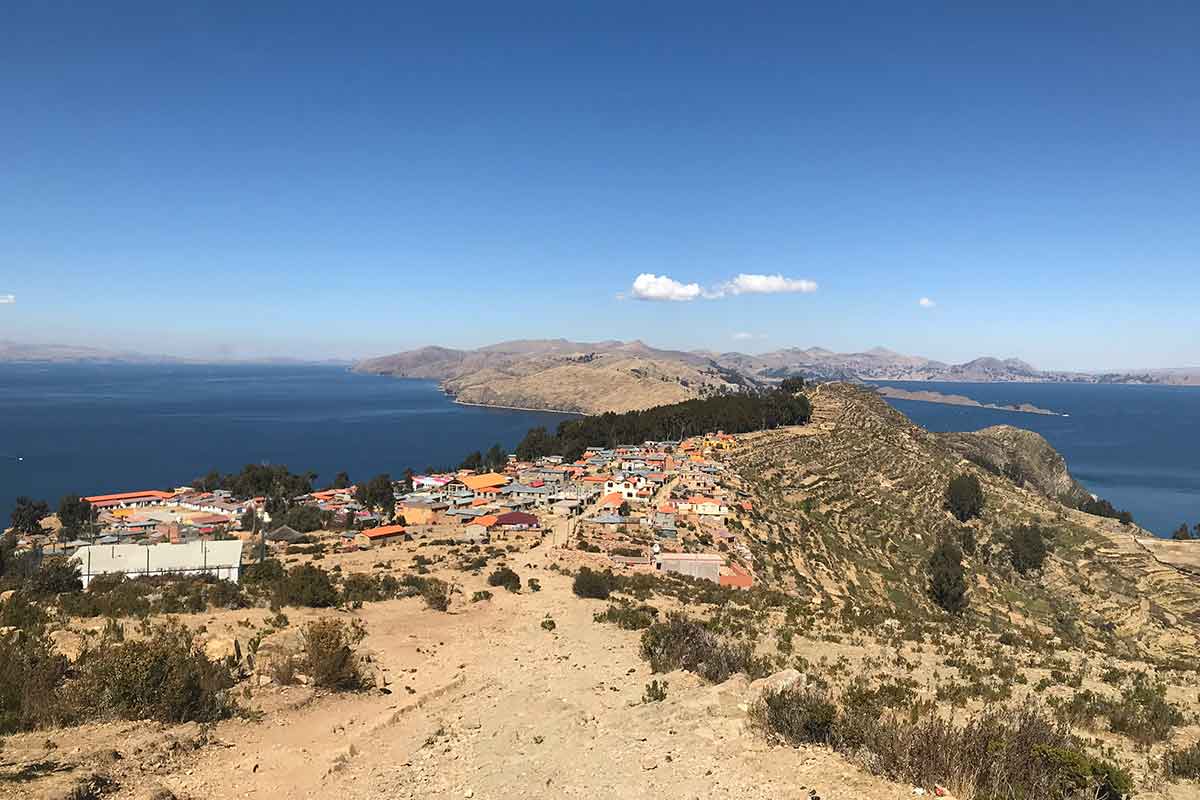
Where is Lake Titicaca?
This giant lake is found in the heart of South America, and actually straddles both Bolivia and Peru (split 56% and 44% between each respectively).
If coming from Bolivia then you’ll need to head to the city of Copacabana in the north, which is the gateway to the lake (you can easily arrive from La Paz in just a few hours).
For Peru you’ll head south to the city of Puno , which connects well with other Peruvian hotspots like Arequipa and Cusco.
Given it’s a high altitude Lake (around 3800 metres) you’ll want to follow our altitude safety tips, as well as bringing thick clothing given how cold it gets at night.
How far is Lake Titicaca from Cusco
Lake Titicaca is located roughly 300 km south of Cusco, and when heading here you’ll first arrive at the lakeside city of Puno.
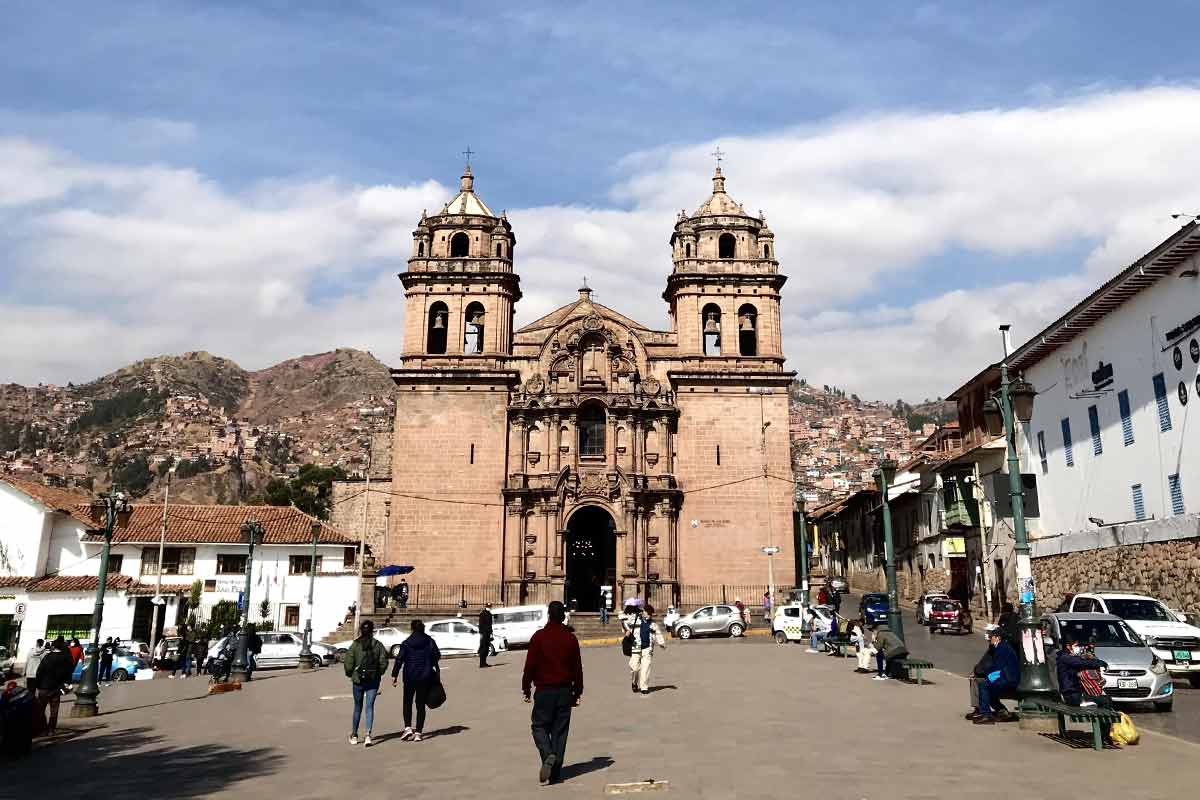
The bus from Cusco to Puno takes roughly 8 hours , and we recommend taking the night-bus to save daylight time.
Given its location in the extreme south, it’s a good stop to add in after Cusco once you’ve seen the wonder that is Machu Picchu in all its glory.
Those shorter on time can also join this 2 day tour of Lake Titicaca from Cusco , which includes visits to both Taquile and the Uros Islands.
7 Reasons to Visit Lake Titicaca
Are you still wondering if Lake Titicaca is right for you? Here’s 7 awesome reasons why you should head to this Mexican island.
1. Visit the Floating Uros Islands
By far one of the most incredible man-made sites in Peru, the Uros Islands aren’t quite your typical island destination.
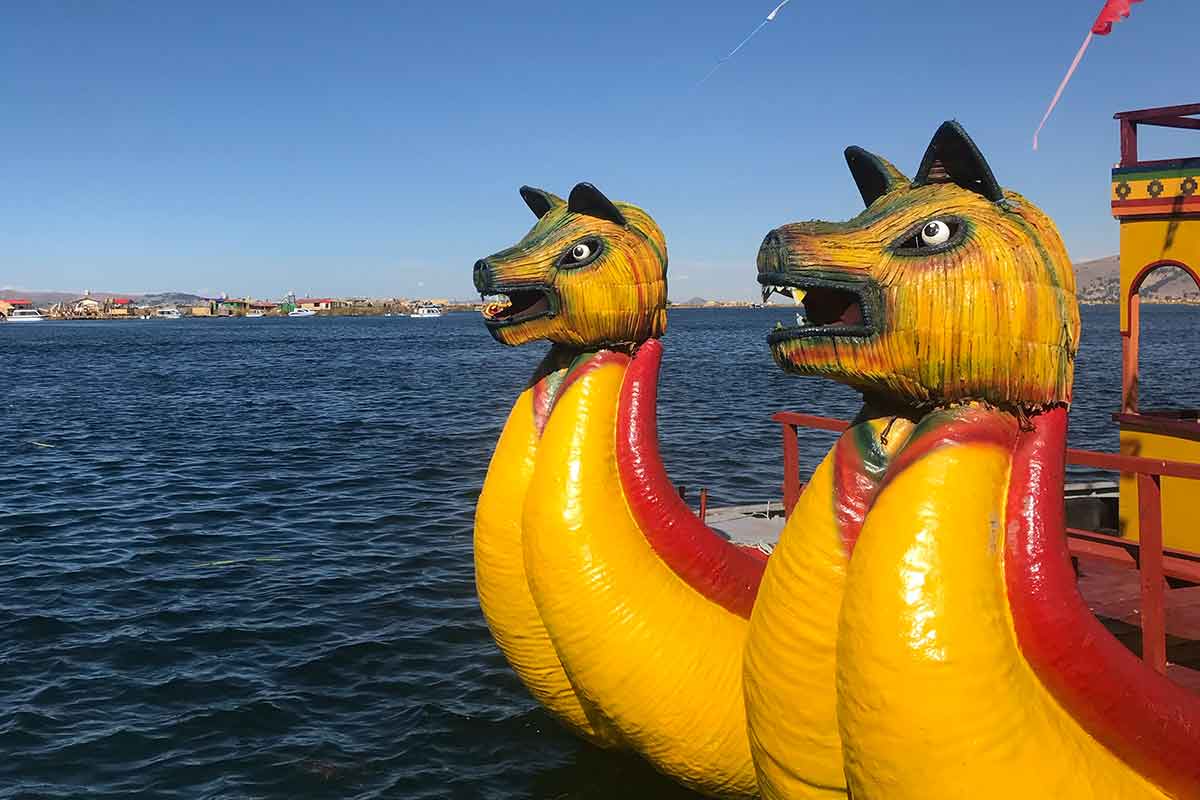
Built entirely out of the floating Totora Reed which grows wild on the lake, these islands are home to three different indigenous tribes; The Uru-Chipaya, Uru-Murato, and Uru-Iruito.
Completely self-governed, they live full-time on the islands cooking and doing whatever else is needed day to day to sustain themselves.
These groups were actually living on the mainland relatively peacefully, until the threat of invasions led them to building their own off-shore havens.
You can head to the islands on a day trip from Puno , with the boat ride taking just 45 minutes. As well as getting to know the groups and seeing how they live, you’ll also have the opportunity to ride around in one of their famous dragon-head boats .
2. Head up to Cerro Calvario
Heading over to the Bolivian side now, we have this epic mirador lookout point.
It’s located in the city of Copacabana, which is the main base camp for travellers looking to explore Lake Titicaca from the south.
Cerro Calvario is definitely the best land-based vantage point out onto the lake , and is a must for those who are short on time and can’t visit other islands such as the Isla del Sol.
The hike up takes around 30 minutes, but it’s definitely a humbling one given you’ll be panting with the high altitude. We recommend taking your time up, having frequent breaks and also bringing lots of water.
Whilst you can hike up pretty much any time you want, we suggest going around the early morning (6:00am) for an epic sunrise , where you can then grab a caldo by the lakeside before exploring the lake for the day (we’ll cover where to eat these later in this article).
3. Explore Taquile Island
Located roughly 45 km south of Puno on the Peruvian side, Taquile is arguably the most beautiful island of them all (and is a major stop for any traveller heading around Southern Peru).
Some of the best things to see here include the beautiful stone gates and paths, as well as various pre-Inca ruins.
Taquile Island is also the perfect place to have a homestay experience . The locals here are extremely friendly, hard-working and also are eager to share their traditions with foreigners staying with them.
Boats leave from Puno to Taquile in the early morning, and take around 3 hours to arrive . For this reason it’s best to spend the night given you’ll otherwise be in a rush trying to see everything.
If you have an extra day then consider this overnight tour to Taquile Island , which includes all meals, transport as well as a night stay on the beautiful Isla Amantaní.
4. Eat an Early-Morning Caldo overlooking Lake Titicaca
A big part of Andean life are the hot soups (or caldos as called in Peru and Bolivia), which are even more a staple for those living around this lake.
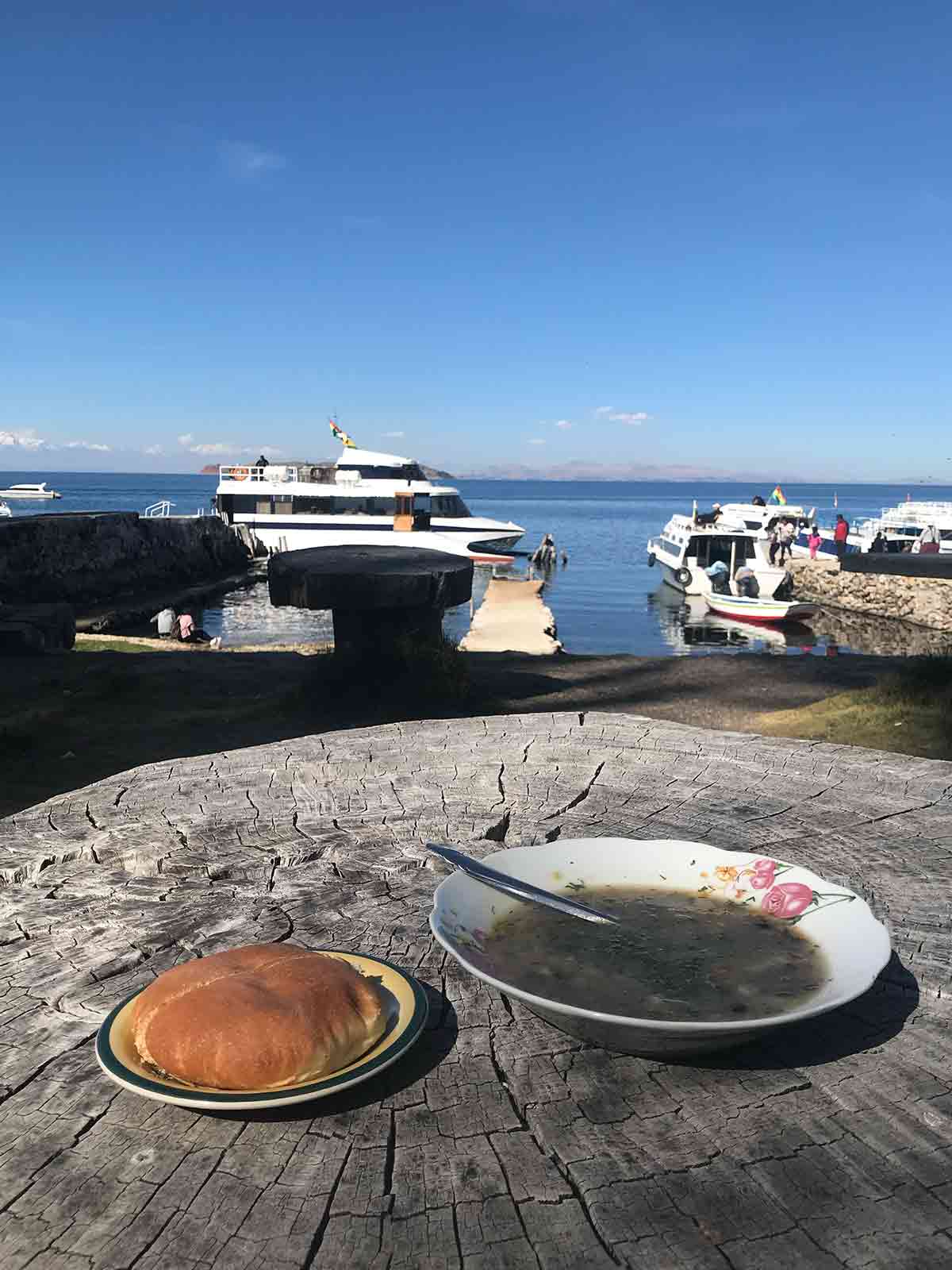
With temperatures regularly dropping down into the minuses, the late night and early mornings can be painfully cold.
Of course being here as tourists we’ll force ourselves out anyway to explore, so this is why we recommend grabbing a hot caldo to help warm yourself up.
In Copacabana the very best are located along the lake’s edge (when you walk down you’ll want to turn left, walk a couple of minutes and you’ll see dozens of tiny lakefront restaurants).
Some interesting options to try out include Chaulla Caldo (made with fresh fish), Sopa a la Minuta (spaghetti and vegetables) as well as the classic Caldo de Gallina (chicken-based).
5. Hike around Isla del Sol
Having already explored the two main islands on the Peruvian side, now let’s take a look at the main highlight of the Bolivian region.
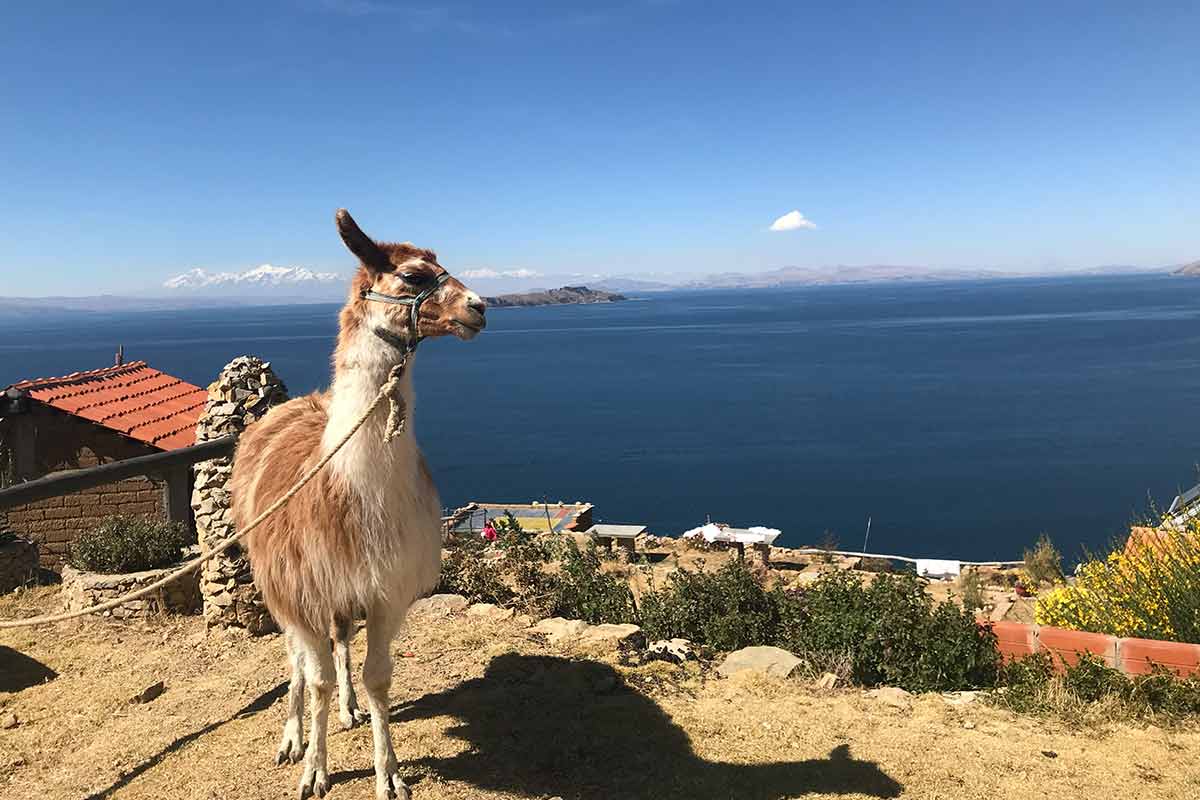
Isla del Sol is by far the best thing to see in the south, and is also our personal favourite. Here you’ll see the rolling terraced hills rise up into the sky from below , which make for an incredible hiking circuit around the top of the island.
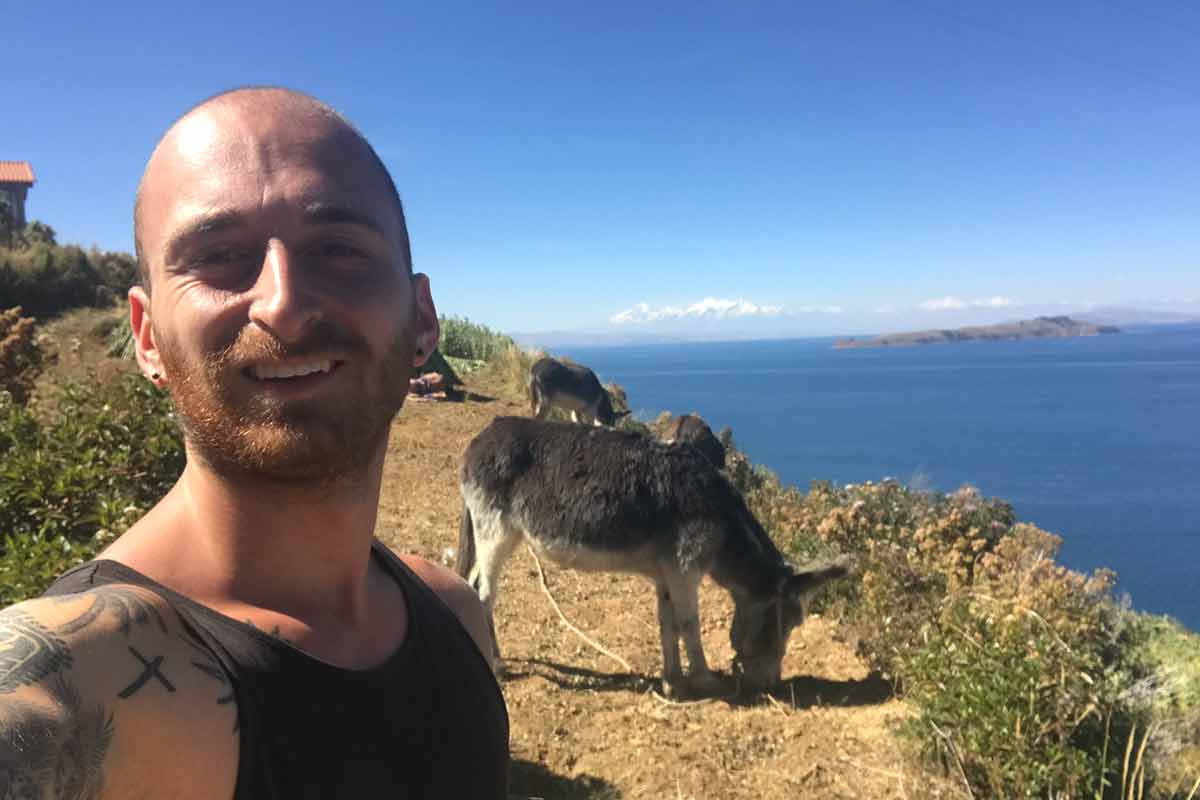
There’s also many ancient ruins to see here too such as the Ruinas del Sur .
Surprisingly we can also find a nice beach here (on the eastern coast, in the area of Cha’lla). Even more surprisingly is the fact that it gets quite hot here during the midday, so you could easily sunbathe for a few hours before the chilling evening cools return.
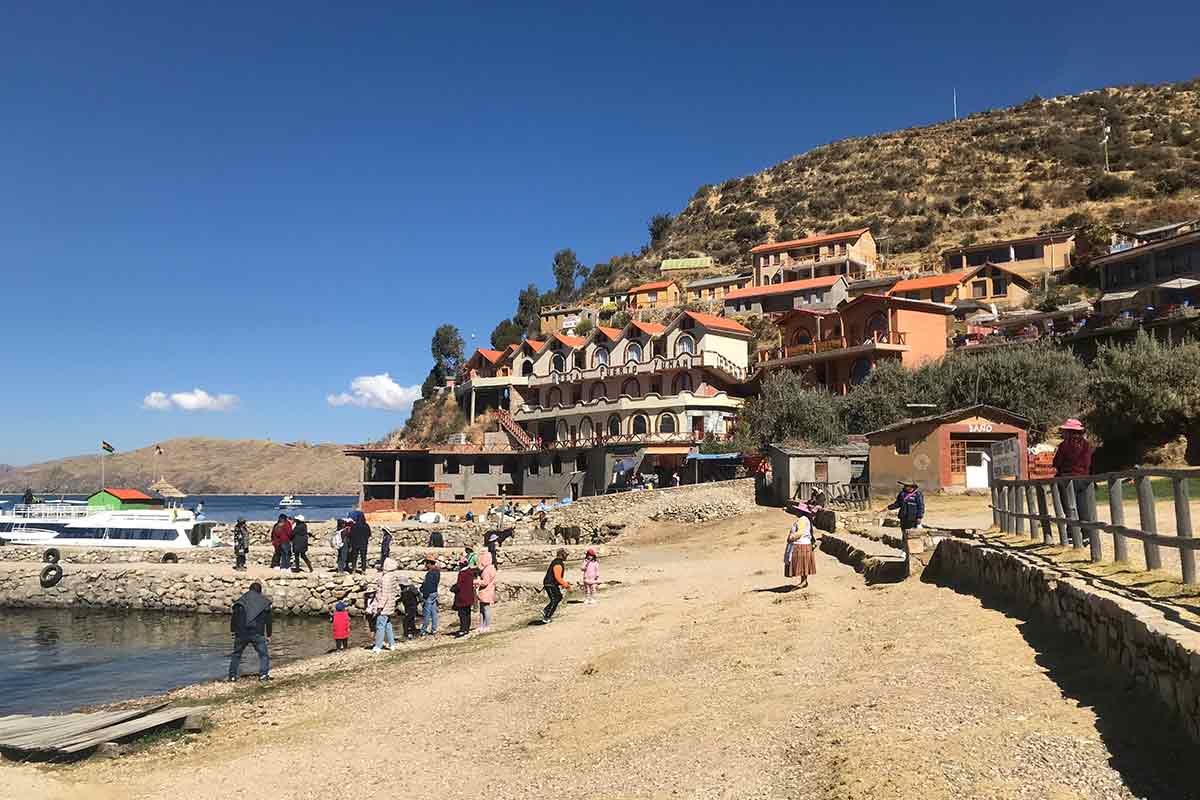
You can reach the Isla del Sol by taking a boat from Copacabana, which takes roughly 2 hours to arrive . Travellers who are in La Paz can also visit with this awesome day tour .
6. Check out the city highlights of Puno
We get it – your main reason coming here is to see the lake and the various islands within. However don’t let that sway you from seeing the more charming side of the Peruvian lakeside city.
The Plaza de Armas is a good place to head to, where you’ll see many architectural beauties. This includes the Puno Cathedral , which looks similar to the famous church in Cusco with its giant side towers and baroque facade.
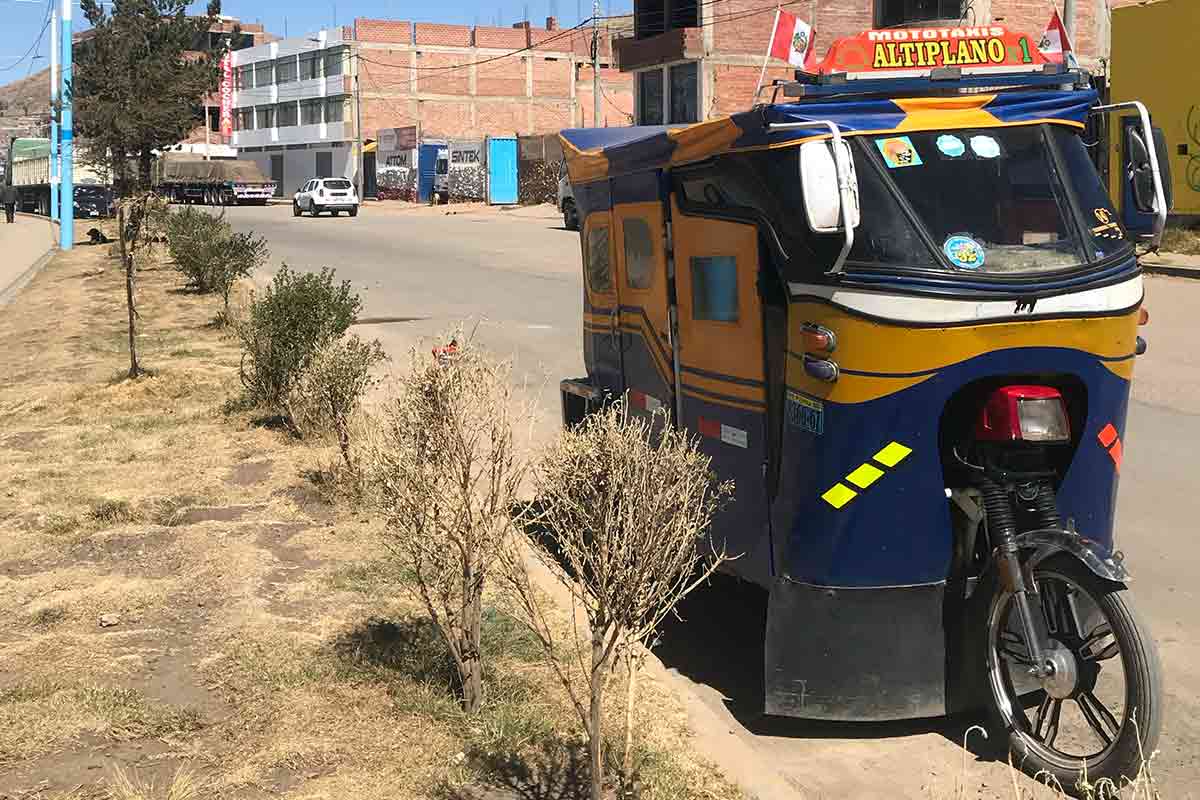
You can also visit the Museo Carlos Dreyer , which features various paintings and Incan artefacts inside of a beautiful, blue colonial building.
There are some top-rated hostels to stay at in Puno, and while you are getting acquainted with the local vibes, we recommend going for a stroll along the Puerto Muelle Puno, which is a beautiful walkway that connects the city to the lake.
You’ll find many artisan shops along the way, and this is also the place to find local fishermen offering local trips, as well as heading on a tour to the Uros Islands.
7. Witness the legendary Festival de Candelaria
One of the biggest Peruvian festivals of the year, the Virgen de la Candelaria celebrates the Andean culture of Puno by putting on a festival every February.
During the first two weeks of the month there are numerous parades and features dancers from the region performing native routines.
They’re also known for wearing an array of terrifying masks and outfits that look something out of a horror film, which adds even more to the unique ambience.
The main highlight is held on the first Monday, where a non-stop 12 hour parade is held throughout the streets of Puno. Definitely worth planning your trip around if visiting this part of South America in February.
Got travel insurance for Lake Titicaca?
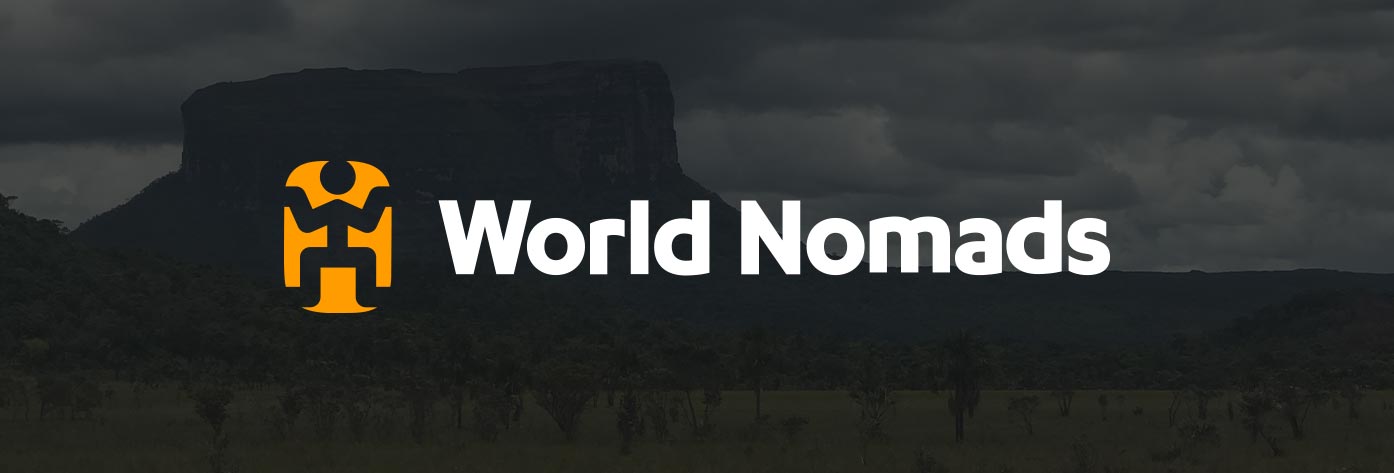
And that’s all for our guide on why you should visit Lake Titicaca.
A highlight on any trip to either Peru or Bolivia, this stunning lake is full of both mystery and worthwhile gems to uncover.
You’ll also find remote indigenous groups living full-time on these islands , and you can easily meet them and see how they continue to keep their ancient traditions alive today.
Be sure to read our comprehensive Backpacking Peru Itinerary , where we have even more travel tips and suggestions for your trip here.
If you’re heading south after, then our Backpacking Bolivia Itinerary will also come in handy.
👉🏽 P.S. If you’ve found this guide helpful, buy us a coffee here to say thanks! Or, support us by downloading our South America Travel Bible to get our best content.
“ Dear traveler! Some links in this post contain affiliate links. Meaning, if you click through and make a purchase, book a hostel or sign up for a tour, we may earn a small commission at no additional cost to you . Your support means a lot and helps us to carry on traveling and maintaining the quality of this site for you.”
Similar Posts

10 days in Ecuador Itinerary
Many tend to skip Ecuador whilst traveling through the continent, and we think this can end up being a really big regret. The perfect gateway between Colombia and Peru, here you’ll visit beautiful cities such as Cuenca and Quito, chill Pacific beach towns as well as impressive jungle landscapes. Given Ecuador is quite small, you…
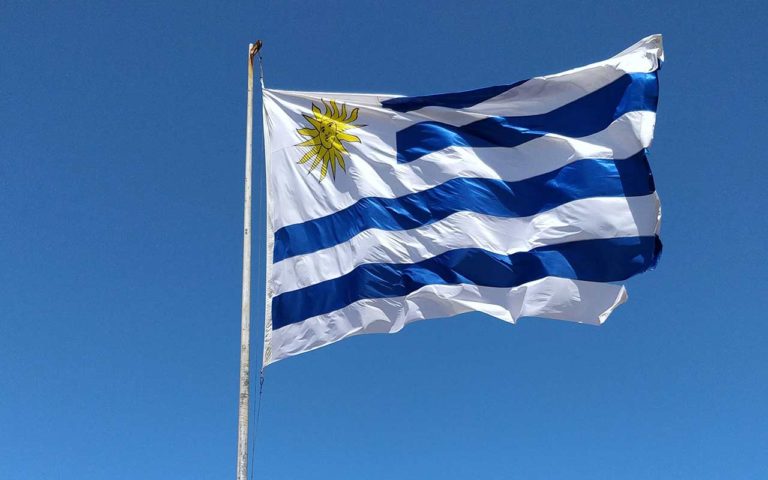
Backpacking Uruguay Itinerary
Welcome to this backpacking Uruguay itinerary. Uruguay is tucked between Argentina and Brazil, and it’s a lovely place to visit. Due to its political stability and free educational system, it’s known as the Switzerland of South America. Backpacking Uruguay Itinerary Uruguay is known for many things and it has lots to offer so by adding…
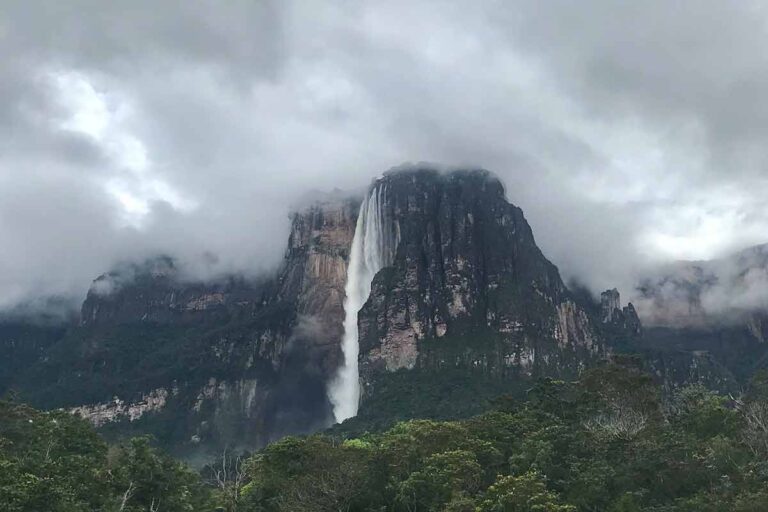
Into the Venezuelan Jungle: The Trek to Angel Falls
The tallest waterfall in the world has always been on my radar. Ever since I was a teen I dreamed of coming here, however, the biggest stumbling block was that it was located in Venezuela, which isn’t the easiest country to visit (and in a pretty remote part of it too). Currently traveling through Venezuela,…
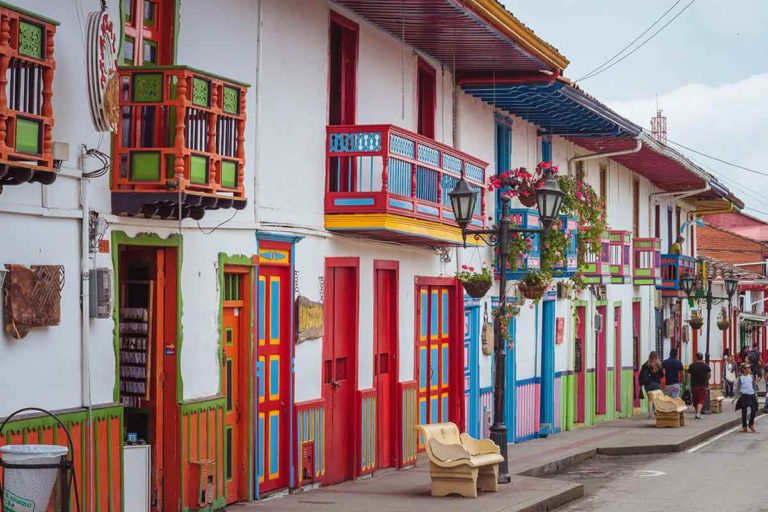
Backpacking Colombia Itinerary
Are you thinking of backpacking Colombia? Colombia is a very popular destination for tourists who want to visit South America. Why? Because it’s one of the most diverse countries in the world. Backpacking Colombia There’s a range of climates, access to two oceans, incredible wildlife, many opportunities for adventure, energetic cities, and super interesting culture….
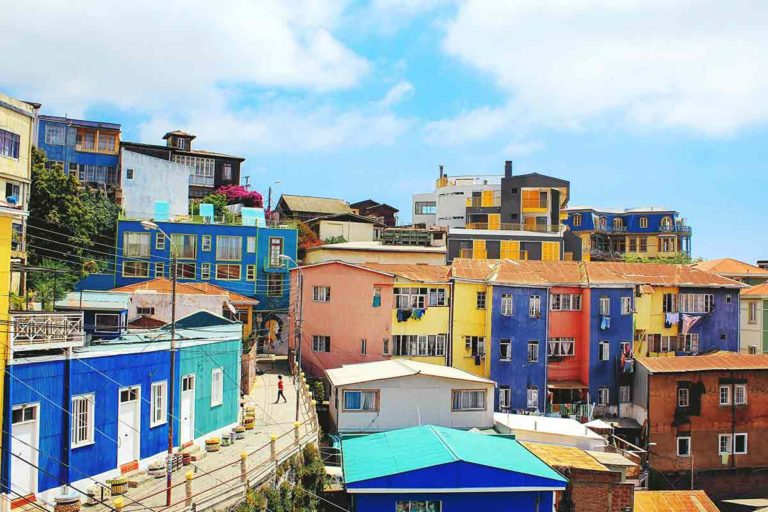
Best time to visit South America
In this guide, we will explore the best time to visit South America. We’ll look at the weather by country and observe things such as wintertime, summertime and average temperatures to give you a better idea of when to visit each country. South America is a humungous continent! One thing every backpacker must know is…
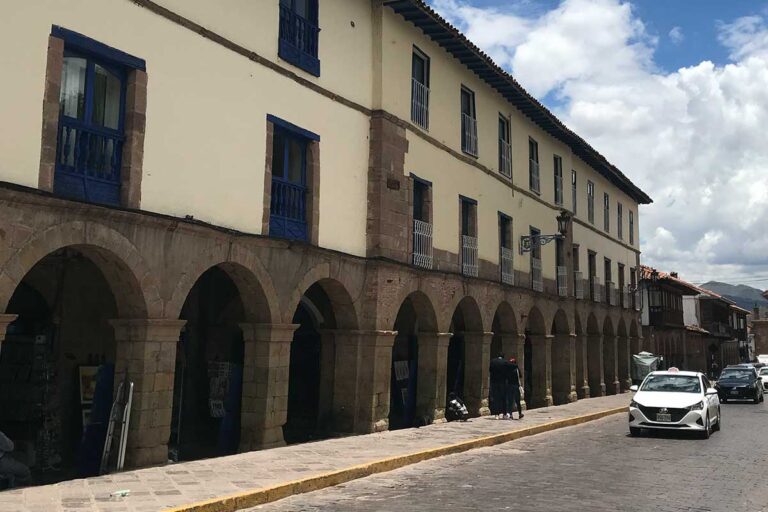
How to get from Lima to Cusco
Are you wondering how to get from Lima to Cusco in Peru? One of the most picturesque cities you can visit in Peru (and a good contender for all of South America), Cusco is bustling with life and local culture. Here we can try Andean dishes in local markets, head on day trips to beautiful…

Lake Titicaca
Lake Titicaca is the world’s highest navigable lake and one of South America’s stunning natural wonders. The deep blue of the water seems to meld with the sky and a ring of snow-tipped peaks creates the remarkable sensation of floating atop the earth’s highest elevations.
It’s possible to visit the lake from its shores in Peru and Bolivia, but many travelers start their exploration from Puno on the Peruvian side of Lake Titicaca. Renowned for its annual celebration, Fiesta de la Virgen de Candelaria , the town of Puno is where you catch a speedboat for an island-hopping experience without equal, including opportunities for cultural exchange with local families.
Amid this lake are the mesmerizing islands of Taquile, Amantani, and Isla del Sol which protect ancient ways of life and pre-Inca ruins. In the case of the Uros, the reed islands are woven by hand and float upon the surface of the lake!
Climate & Weather
Lake Titicaca resides in the high plain Altiplano region with a semi-arid climate. Daytime temperatures average between 60ºF to 65ºF (15ºC to 18ºC) throughout the year. At such a high elevation, night temperatures drop in the region, so pack a jacket to keep warm. Snowfall is very unlikely.
Dry Season Vs. Rainy Season
- The dry season is from April to November. Weather conditions are usually sunny and pleasant. On a clear day the sun’s rays are strong - especially reflecting off the lake surface – and sun protection is a must. In June and July, nighttime temperatures hover around freezing.
- The rainy season is from December to March. On days with rainfall, clouds usually build through the morning to bring afternoon showers and thunderstorms. January and February see the heaviest rainfall.
Best Time to Visit
The peak travel season is during June, July, and August. These months are at the heart of the region’s dry season and what many consider the best time to visit Lake Titicaca.
The shoulder season falls between the rainy season and peak dry season; April to May and September to November. The weather during these months is pleasant and there are fewer tourists. April and May fall after the tail end of the rainy season and are particularly beautiful months to visit Puno because the surrounding landscapes are green and flowers are in bloom.
Geography & Map
- Lake Titicaca covers southern Peru and much of western Bolivia. Few trees survive at such a high altitude, so grass and shrubs dominate this wind-sheared landscape.
- Elevation 12,500 ft (3,810 m) Population ~ 130,000 (Puno)
Long before an imaginary line was drawn through Lake Titicaca, establishing its Peruvian and Bolivian halves, the ancient cultures of Pukara, Tiahuanaco, Colla, Lupaca, and Inca lived along its shores. Sometimes they coexisted peacefully, while other gaps in history are marked by periods of conflict.
Lake Titicaca was sacred to the Inca. According to legend, Viracocha, the Inca god of creation, emerged from the depths of Lake Titicaca and created the sun, the moon, the stars, and mankind. This marked the birth of the Inca Empire and its great expansion across the Andes and beyond.
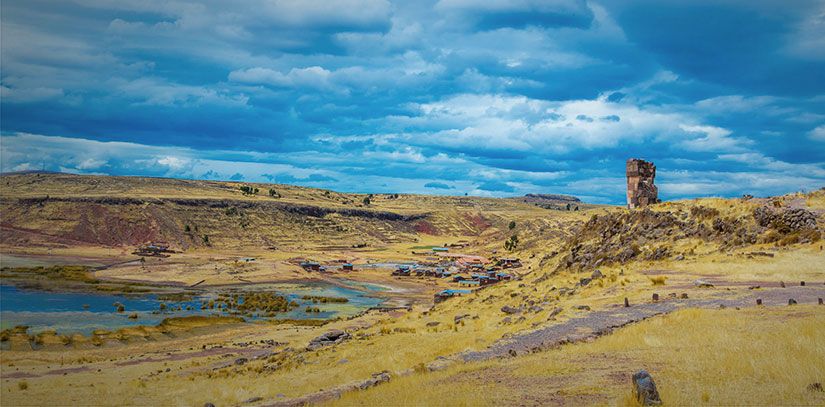
The Spanish conquest of the Inca Empire transpired from 1531 to 1533. Francisco Pizarro and his troops led the fight to dismantle the Inca rule in Cusco. Shortly thereafter they arrived in Lake Titicaca on a mission to colonize southern Peru. Interest in the region was also fueled by gold and silver, which led to violent conflicts during the mid-1600s over power over the mines.
Puno city was established in 1668 as the capital of Puno Province of southern Peru. The Catholic influence brought by Spanish colonialism is echoed in the grand churches that still line the streets of Puno and the colorful mixture of Christian beliefs paired with native Aymara and Quechua dances from the region. Today, Puno is celebrated as the folklore capital of Peru and its past and present are largely influenced by its alluring neighbor, Lake Titicaca.
Lake Titicaca Islands
There’s no denying that the cultural makeup of Lake Titicaca is a layered one, and uncovering the differences and similarities between the island communities is part of the fun. Listen closely during your tour to different islands and you’ll likely hear two foreign languages that aren’t Spanish: Quechua and Aymara.
Uros Islands, Peru
Centuries ago, the Uros people abandoned their homes on the mainland to establish a way of life on floating islands amid the waters of Lake Titicaca. Today resident families welcome travelers to their floating homes. The Uros Islands are more touristy than other Lake Titicaca islands, but this doesn’t mean they aren’t worth visiting.
Locals greet you as you take your first steps on the soft and springy island surface. Torta reeds are the main building-block of their homes. During your stay, locals explain the regular upkeep their reed homes require and show you how they weave the reeds together to build their thatched homes, furniture, and canoe-style boats.
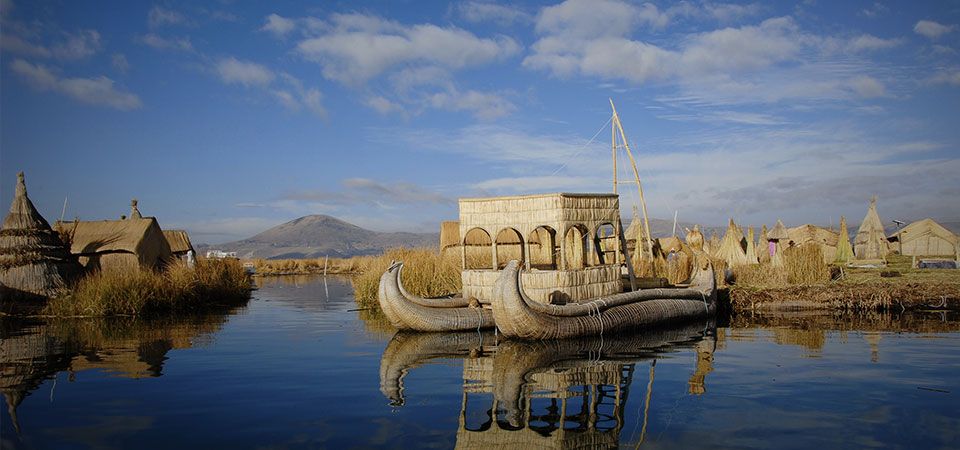
Suasi Island, Peru
Suasi Island is the only privately-owned island in Lake Titicaca. Far away from Puno, just off the lake’s northeastern shore, the exclusive Isla Suasi resort is the perfect retreat for anyone who wants to truly disconnect. Unwind with a spa treatment or take a rest on a lounge chair in the garden overlooking the lake. With nature just outside your room, there’s no better way to reveal in its beauty than paddling out on a kayak or hiking to the lookout point at Itapilluni Hill.
Isla del Sol, Bolivia
Isla del Sol is a place of Andean legend. It’s the mythical birthplace of the Incas, where the Inca creator god Viracocha rose from Lake Titicaca with a very important mission. He created the sun, moon, and stars above, the surrounding universe, and the first Incas.
Sacred sites on the island honor its past. The Chincana ruins, also known as “The Labyrinth,” are believed to have been a holy complex for Inca priests. Travelers can visit these ruins from the island’s north-base village of Challapampa and then make the climb up Cerro Uma Qolla for a great lake view. Spending the night on Isla del Sol (highly recommended!) is a bit like taking a step back in time with no cars anywhere and locals walking past in traditional dress. The best way to explore the island is by walking the trail circuits connecting the northern part of the island to its southern tip.
Travel Tips
Packing List
Here’s a checklist of items to bring in your daypack for an island hopping tour:
- Bottle of water
- Protection from the sun (sunglasses, hat, and sunscreen)
- Warm clothing (for windy or nighttime temperatures)
- Camera and charged batteries
- Comfortable footwear
- Money to tip your tour guide (optional)
How to Get to Lake Titicaca
- Lima to Puno (Juliaca Airport): 1 hour 45 minutes non-stop
- Cusco to Puno (Juliaca Airport): 1 hour non-stop
- By Bus: Bussing is a popular and convenient option for getting from Cusco to Puno and takes 6 to 7 hours. For optimal comfort, ask your travel advisor to book a fully reclining seat (full or semi-cama). Bus service is also offered between Arequipa and Puno and takes 5 to 6 hours.
- By Train: PeruRail operates the Andean Explorer train which runs between Cusco and Puno. The luxurious 10-hour ride chugs past beautiful towering Andean peaks and small rural villages. The Puno train station is located on Av. La Torre 224.
How to Get Around Puno
- Puno City: Many attractions, restaurants, museums, and shops located around the main plaza are navigable on foot. Puno-hotels located on the outskirts of town is about a 15-minute taxi drive from the downtown area.
- Puno to the Islands: Boat tours depart from the docks in Puno and private hotel piers.
Health Concerns
- High Altitude Lake Titicaca is located at a breathtaking 12,500 ft (3,800 m) above sea level. Many travelers ask: Will I get altitude sickness? The truth is that each person responds differently to high elevations and it has little to do with fitness. Eat light meals on the first day and avoid strenuous physical activities for the first 24 to 48 hours as you acclimatize. Minor altitude sickness symptoms include headache, shortness of breath, and loss of appetite. Serious reactions to altitude are rare and hard to predict.
- Sunburn The sun’s rays are exceptionally strong out on Lake Titicaca; resulting from the high altitude and light reflection off the lake’s surface. Protect yourself by wearing sunblock, a wide brim hat, and glasses. Long-sleeve shirts and pants are advised.
- Motion Sickness Water conditions can be choppy out on Lake Titicaca. If you get motion sickness, it’s a good idea to bring a remedy for a boat ride to the islands.
Things To Do

Island Hopping Tour
Don’t just go to Lake Titicaca; go Lake Titicaca island hopping. Only a 30-minute ride away from the docks in Puno, the Uros floating islands are nearest to the city. A full-day tour is needed to explore both Uros and Taquile which are further out. Meet residents and learn firsthand about their centuries-old traditions.

The city’s pedestrian boulevard, Calle Lima, is a block away from the main plaza. This central thoroughfare is lined by shops, bars, and restaurants. Must-see city attractions include the Puno Cathedral, the Carlos Dreyer Museum, and the Yavari Boat Museum. Check out our 24-hour guide to Puno.

Andean Island Getaway

Lake Titicaca Homestay

Sillustani is the main archaeological attraction in the Lake Titicaca region. Several circular and square burial towers, called chullpas, remain from this pre-Inca cemetery. The chullpas were the final resting place for nobles whose mummies were put in the tombs alongside gold artifacts and other earthly riches. The site is perched on a little peninsula in Lake Umayo and overlook beautiful altiplano scenery.
About 20 mi (30 km) north of Puno, Peru

The archaeological site at Cutimbo features tall burial towers called chullpas that are similar to those at Sillustani. The site was used by several different cultures, first, the Colla and Lupaca followed by the Inca. A trail from the main road leads up the circular and square-shaped Cutimbo chullpas perched on a table-topped mountain. Of particular interest are the monkey, snake, and puma shapes etched into the stones bricks of some ancient tombs.
About 15 mi (25 km) south of Puno, Peru.

The archaeological complex at Pukara is where the first regional population in the northern Lake Titicaca basin thrived between 500 BC – 200 AD. Weaving tools and shards of decorated pottery are among many artifacts discovered at Pukara that offer researchers important insight into the origins of Andean civilizations in the highlands. Visit the archaeological site and the Pukara Lithic Museum on a day trip from Puno.
Pukara is 60 mi (100 km) north of Puno, Peru.

Temple of Fertility
The Temple of Fertility, or Templo de Inca Uyu as it’s known in Spanish, is the main attraction of Chucuito, a small town on the banks of Lake Titicaca just south of Puno city. Within the walled-off complex are rows of eyebrow-raising stone statues of male genitalia. Rumor has it that women trying to get pregnant once frequented the temple to perform fertility-boosting rituals. While the stone wall at the temple is distinctly Inca, the originality of the statues and their placement at the site is up for debate.
The town of Chucuito is 11 mi (18 km) south of Puno, Peru.

After exploring the Peru side of Lake Titicaca, you can extend your stay and cross the border into Bolivia and head to Copacabana. Instead of taking the bus from Puno to Copacabana, consider taking a Lake Titicaca Catamaran Tour . Much smaller than Puno, this lakeside Bolivian town is popular for grabbing a boat to Isla del Sol and Isla de la Luna. You can also spend a free afternoon around Copacabana, perusing the souvenir shops and walking up to Calvary Hill (Cerro El Calvario) for a nice lookout over town and lake.
Copacabana, Bolivia

The UNESCO Heritage Site of Tiahuanaco (also spelled Tiwanaku or Tiahuanacu) is accessible from the Bolivian side of Lake Titicaca and an impressive spiritual and political city left behind from the Tiahuanaco culture (500 and 900 AD). Many of the original adobe-structures are long gone, but the remains of impressive stone structures still stand including the cross-shaped pyramid of Akapana, the Semi-Subterranean temple, the 131-metric ton Ponce monolith at Pumapunku, and the temple of Kalasasaya.
Tiahuanaco is 110 mi (180 km) from Copacabana, Bolivia.

GHL Hotel Lago Titicaca
Isla Esteves s/n, Puno

Casa Andina Premium Puno
Avenida Sesqui Centenario 1970, Sector Huaje, Puno

Lake Titicaca Hotel Puno
Avenida Chulluni 195, Puno

Casa Andina Standard Puno
Sesquicentenario 610 Sector Huaje, Puno
Restaurants

Balcones de Puno
Cafe-bar de la casa del corregidor.
Mojsa is one of the nicest restaurants in Puno. Its relaxed ambiance and charming balcony with views overlooking the Puno Cathedral is a great way to unwind after a long day of exploration. Order from a well-assorted menu of typical Peruvian dishes including aji de gallina , lomo saltado, and rocoto relleno.
Cultural Events
Puno is the folklore capital of Peru. This recognition stems from the wealth of artistic expressions and dynamic traditions showcased during the city’s numerous Aymara and Quechua-infused celebrations.
When Spanish colonialism made its imprint on the altiplano region during the 16th century, the indigenous communities adopted Catholicism in a selective manner. Churches were built in Puno city and Catholic holidays asserted into the annual calendar. Yet no local would think about planting crops without paying respects to Pachamama, or “Mother Earth.” The result was a glorious mix of religious syncretism that is evident in its annual folkloric celebrations.

Tour Packages
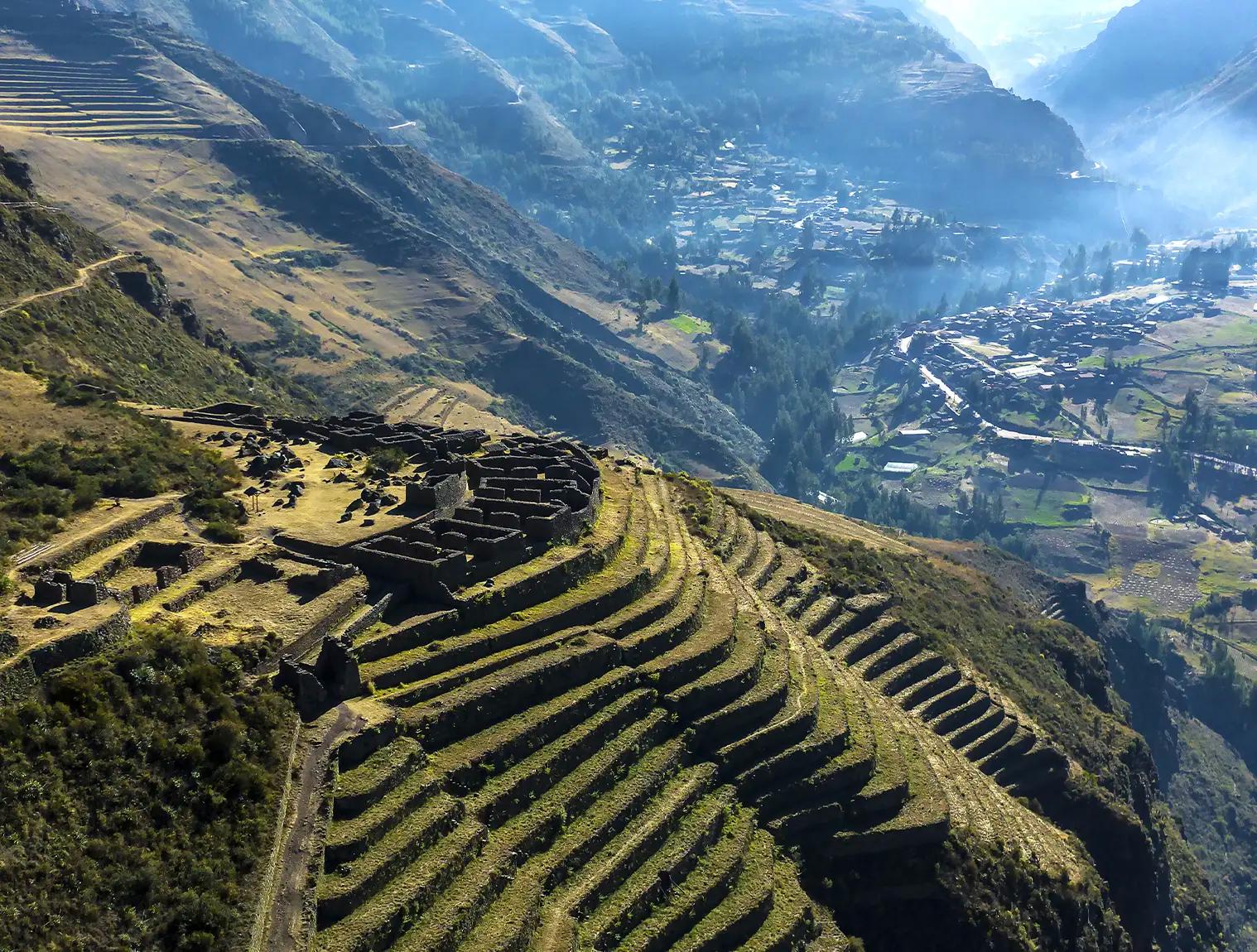
12 days from $ 4089
Lima, Arequipa, Colca Canyon, Machu Picchu, Cusco, Titicaca
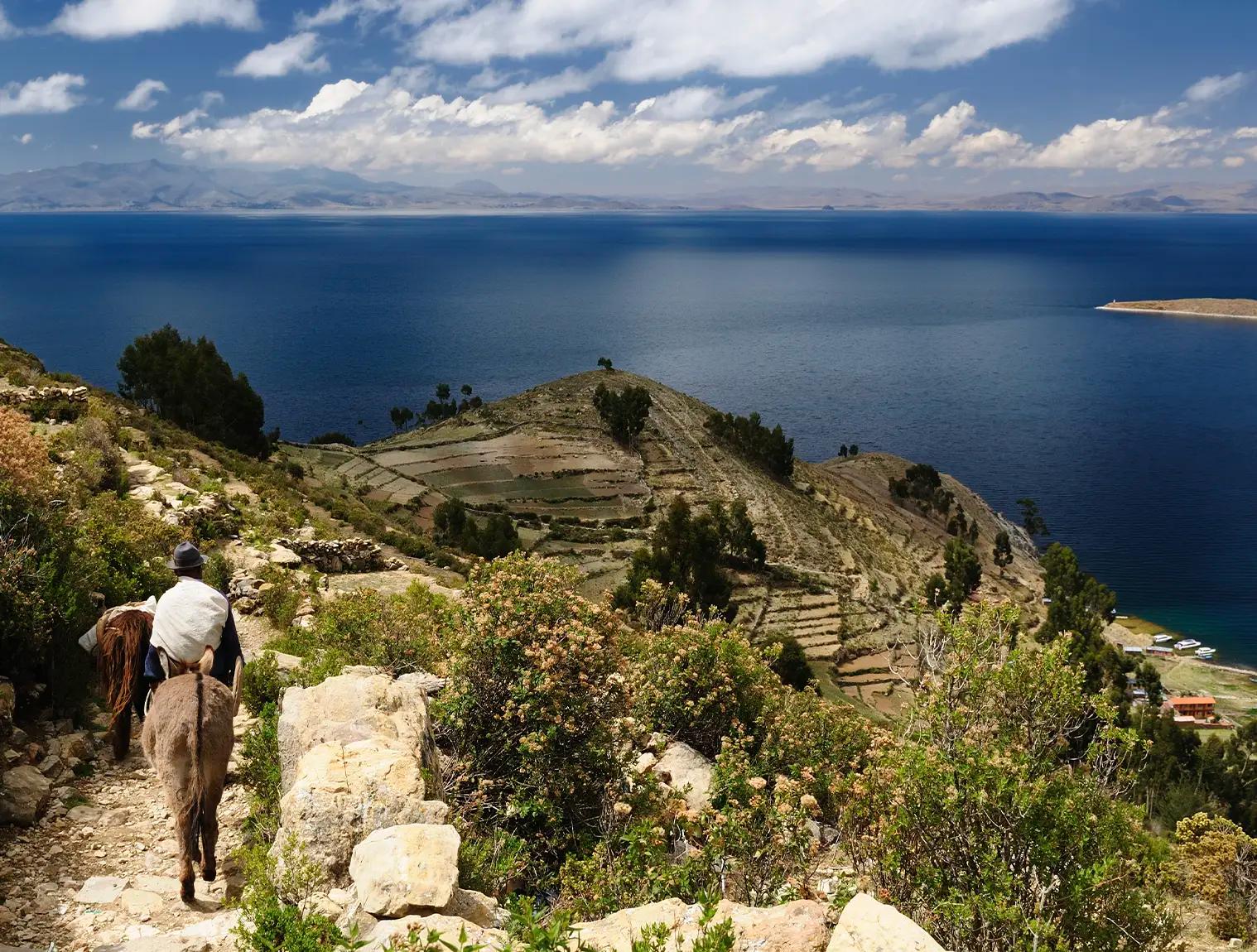
10 days from $ 3599
Machu Picchu, Cusco, Sacred Valley, Puno & Lake Titicaca
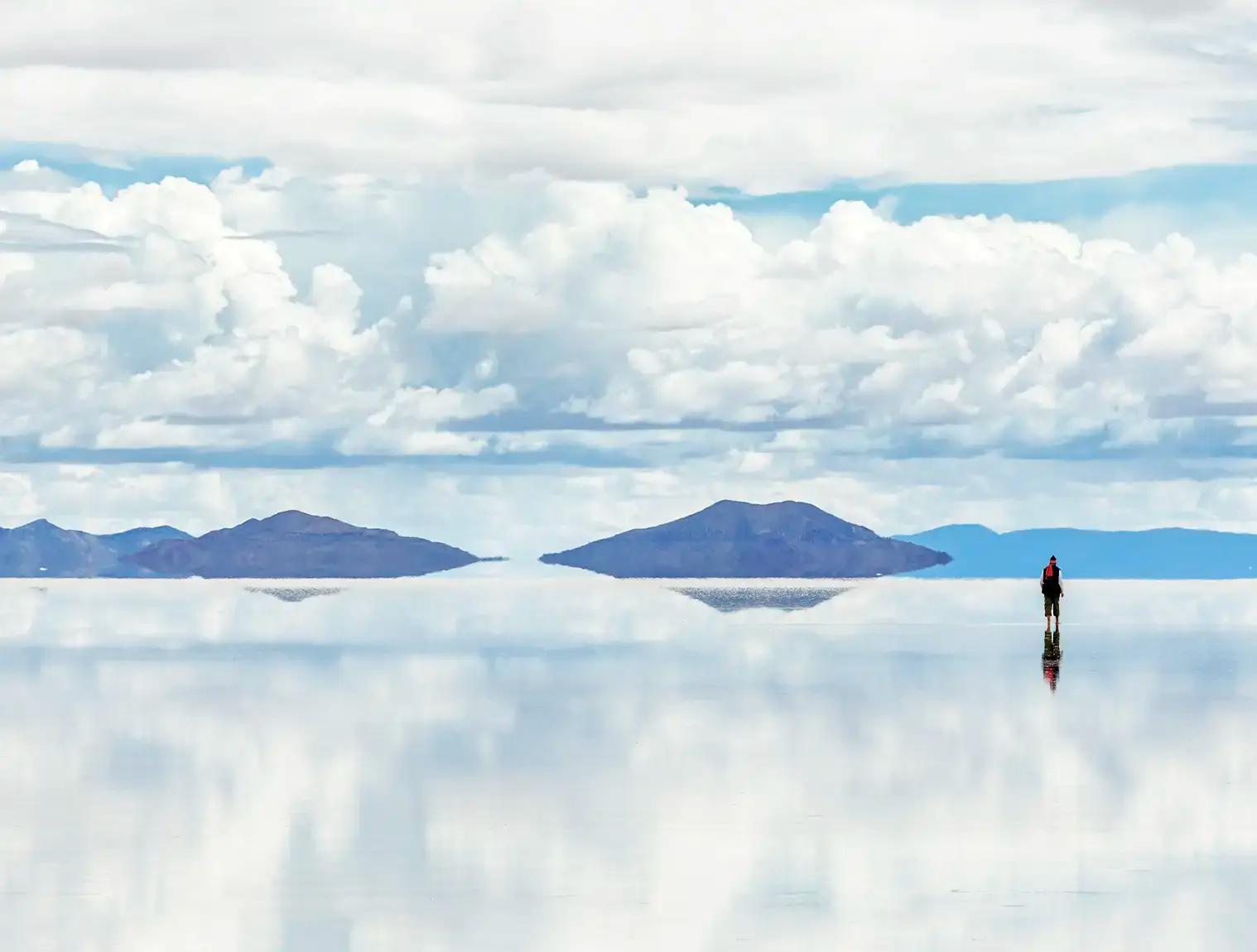
12 days from $ 3769
Cusco, Machu Picchu, Titicaca, La Paz, & Uyuni
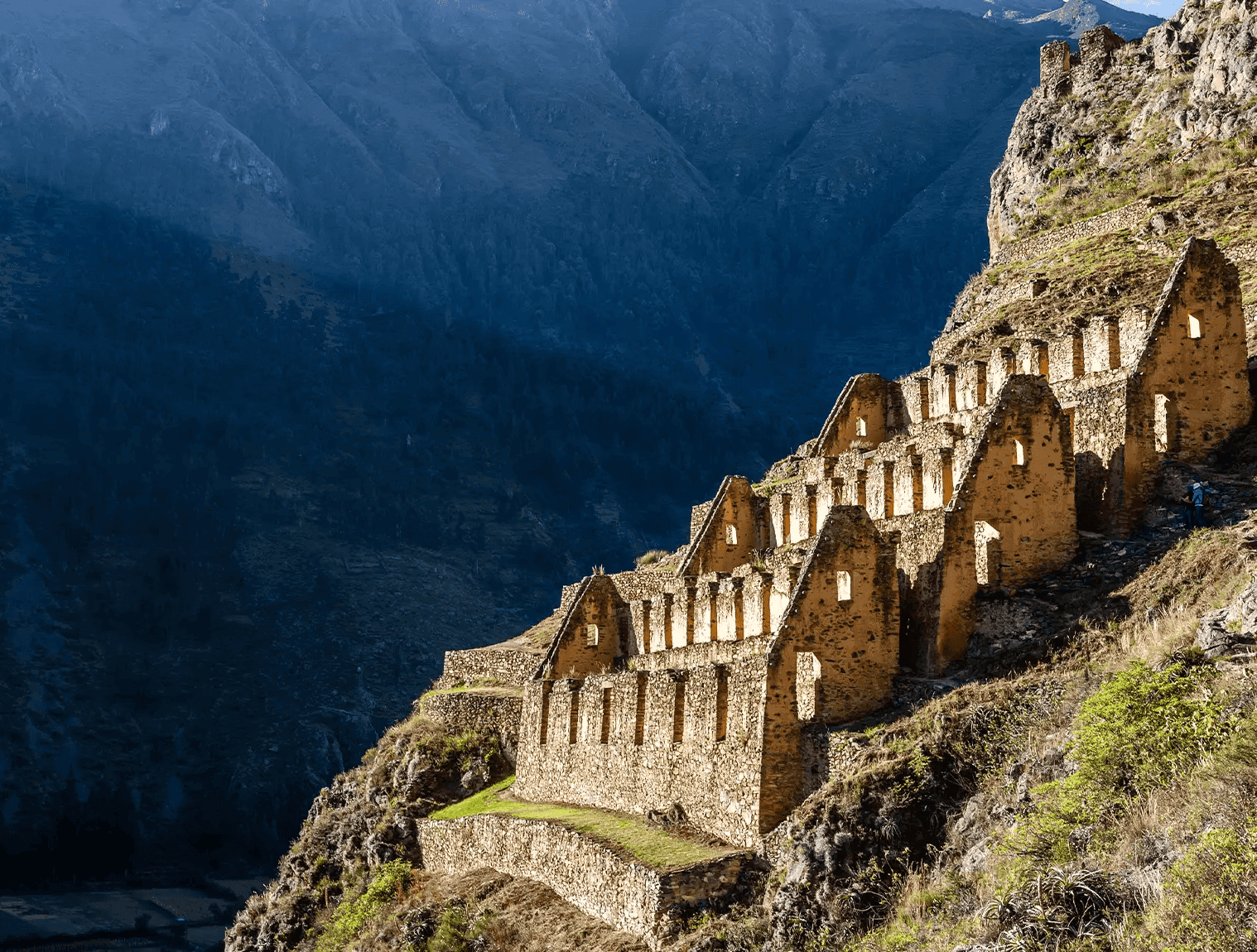
16 days from $ 3869
Machu Picchu, Cusco, Titicaca, Amazon, Lima, Paracas, Arequipa & Colca
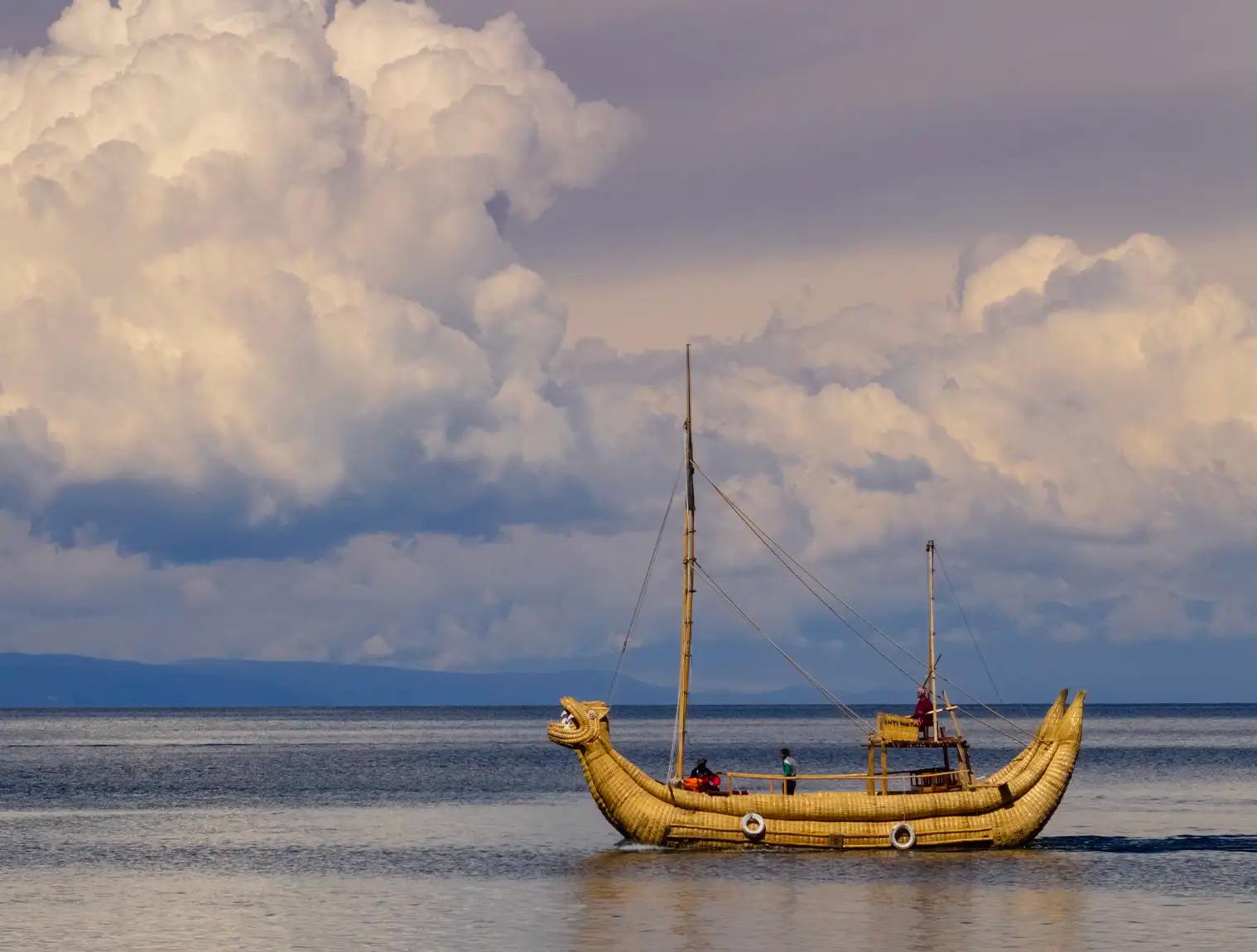
13 days from $ 4319
Amazon, Cusco, Machu Picchu & Titicaca
Where is Lake Titicaca?
How long should i stay in lake titicaca, what is the elevation of lake titicaca, how are the sides of lake titicaca in peru and bolivia different, how do i get from puno to copacabana, how large is lake titicaca, how deep is lake titicaca, what does titicaca mean, can i swim in lake titicaca.

Book With Confidence
We're flexible! Postpone your tour with zero cost up to 10 days prior to departure.
Email: [email protected]
Sign up to receive our newsletter for great articles, stunning photos, and special deals.
1-817-230-4971
Sales & travel support

- Peru Tour Packages
- Customized Tours
- Destinations
- EN EN ES DE
- +51932671370
- Machu Picchu Tours
- Inca Trail Tours
- Salkantay Trek
- Amazon Jungle Tours
- Machu Picchu
- Sacred Valley
- Rainbow Mountain
- Humantay Lake
- Huacachina Oasis
- Huacachina & Paracas
- Lake Titicaca
- Amazon Jungle
- Machu Picchu Guide
- Peru Travel Tips
- Things to do in Cusco
- Things to do in Lima
- Peru Amazon Guide
Home » The Ultimate Guide to Exploring Lake Titicaca and Its Islands
The Ultimate Guide to Exploring Lake Titicaca and Its Islands
- 28 April, 2023
- by Konsti Sobon
- Reading time: 11 minutes

Are you ready to travel to one of South America’s most breathtaking locations? Look no further than Lake Titicaca, a significant high-altitude body of water that shares a border with Bolivia and Peru. This amazing natural wonder is a treasure mine of cultural heritage and history in addition to being a visual highlight.
All the information you need to organize an enjoyable trip exploring Lake Titicaca and its islands in Peru is provided in our comprehensive guide.
This blog will cover everything, from the breathtaking scenery and the lake’s clean waters to the unique accommodations and nearby indigenous villages and more.
We’ll also look at how to prepare for the altitude, what to bring, and how to make the most of your experience. So let’s plunge in and explore Lake Titicaca’s beauties together!
History and Culture
The past of lake titicaca and its surrounding region.
The history of Lake Titicaca and the region around it is extensive and fascinating, going back thousands of years. The lake was originally valued as a holy site by the local indigenous people, who thought the Inca civilization had its beginnings there. The sun, moon, stars, and the first humanity were said to have been created by the god Viracocha when he emerged from the lake.

Allen Callster 18 July, 2023 at 10:07 pm
I read a lot about this fascinating lake and cannot wait to visit next year. We’re planning on doing a 2-week Peru itinerary with 2 nights in Puno (1 night on the lake). Would you say that this is enough?
Oliver from Exploor 19 July, 2023 at 10:47 am
Hey Allen, thanks for your comment. 2 nights in Puno is perfect, as this allows you to visit the Uros islands and the Taquile island in a relaxed way. We recommend an overnight stay on the Uros islands. If you’re interested in this, feel free to send us a mail to [email protected] as we arrange amazing overnight stays on Lake Titicaca.
Cheers, Oliver
Leave a comment
Related posts, 7 reasons to visit lake titicaca in peru.
- 24 April, 2023
- by Konsti Sobon
The Ultimate Luxury Travel Experience in Peru: From Five-Star Hotels to World-Class Cuisine
- 9 April, 2023
Traveling to Peru? Here’s How to Avoid Falling Victim to Scams
- 26 March, 2023

Let’s plan your dream trip to Peru
All of our tour itineraries are 100% customizable . Just let us know your preferences below and we’ll get back to you within 24-48 hours.
- First name* Last name*
- Starting Date* Number of travelers* 1 2 3 4 5 6 7 8 9 10
- Hotels (Optional, multiple choices possible) Luxury Superior Best Value
- Trip Length 3-5 Days 6-8 Days 9-11 Days 12-15 Days 16+ Days Not sure yet
- Comments* 2500 characters remaining

- July 10, 2020
- No Comments
Is Puno Worth Visiting? – A Complete Guide To Lake Titicaca, Peru
Is puno worth visiting.
We think Puno is worth visiting for two reasons : one to see Lake Titicaca obviously, and two, to get a look into the diverse ways of life of the indigenous peoples that live out on the lake – the Uros and the small populations living on Isla Taquile and Amantani.
Lake Titicaca is a sight to behold , stretching on forever in all directions and you will get many beautiful panoramic views of it from around Puno. It’s also a must-see whilst in Peru, especially if you aren’t travelling to on to Bolivia/Copacabana.
Whilst the Uros islands may be becoming a little touristy, the floating islands are an impressive sight and visiting them gives you great insight into how these unique people live.

BEST THINGS TO DO IN PUNO
1. tour the floating uros islands.
The Uros people of Lake Titicaca have made the floating reed islands their homes.
These islands are created by the Uros people themselves and are made entirely from the native totora reeds and mud fro m the lake. The reed islands have to be rebuilt regularly as they erode over time.
Before the Inca invaded the region around the lake, the Uros lived on the shore in towns and villages. However, while other groups bent the knee to the Inca conquerors, the Uros decided to escape out onto the lake instead.
Visiting the Uros islands is a must, experiencing the unique way of life lived by these people is like nothing else you will have seen.
Here are a couple of options for visiting:
- Get Your Guide – Floating Islands (Half-day tour) from £9
- Stay overnight in one of their rooms out on the lake

2. Explore Isla Taquile
Isla Taquile is famous throughout Peru for its expert male weavers who produce textiles of remarkable quality.
The terraced hillsides of this beautiful island are planted with wheat, quinoa, potatoes, and other vegetables and littered with farm animals such as sheep and cows grazing the slopes.
Visiting the island can feel like you’ve entered another country, where the inhabitants live with their own customs, cuisine and clothing vastly different to those of the mainland.
You can climb to the peak of the island, up to 4200 meters of altitude to be rewarded with breath-taking lake views .
Get Your Guide has a Uros Islands and Isla Taquile full day tour for £20.

3. Enjoy A Day In The City
If you do end up with a day to spend in the city, then there’s enough here to keep you occupied.
You can start by visiting the Cathedral in Plaza De Armas and wandering around.
If you want to learn more about Andean culture, then head to the Carlos Dreyer Museum – a museum curated by a German painter and collector who lived in the city. He was a great enthusiast of Andean culture, and the museum contains well preserved archaeological pieces, paintings by the artist himself and three mummies!
An excellent place to watch the sunset is ‘Mirador El Condor’ which will give you a fantastic view of the city and lake – just be careful if you trek up to this viewpoint as we have read a few blogs advising not to bring valuables as it can be unsafe. Check with your hotel and see if you can get a taxi there and back.

4. Visit Isla Amantani
We chose Taquile over Amantani for our day tour so we can’t write much about it here.
Although we imagine it’s a similar experience with indigenous population specific to the island and beautiful views of the lake all around.
It has two mountain peaks , Pachatata (father earth) and Pachamama (mother earth), with ancient Inca ruins on top of both if you prefer archaeology to the weave making of Taquile.
You can find overnight stays/tours on the island on Find Local Trips for cheap.

5. Sillustani Burial Ground
A short drive outside of Puno will take you to the pre-Inca burial site of Sillustani on the edge of Lake Umayo.
Here you can discover the history of the Aymara inhabitants of Lake Umayo and see the ancient burial ground featuring giant cylindrical funeral towers.

WHERE TO STAY IN PUNO
We stayed at Hostal Virgen de Las Nieves II , which cost £15 in total for a twin room with shared bathroom and breakfast included.
The beds were comfy, but there wasn’t much else going for it.
Cozy Hostel has 4-bed dorms from £7 a night with breakfast included. Anywhere near Plaza De Armas is a safe bet.
We booked our tour through our accommodation , which was helpful. However, we imagine you can do this with almost all the hostels and hotels in Puno. If not, you can head to the main square (Plaza de Armas) to find all the tour companies.

HOW MANY DAYS DO YOU NEED IN PUNO?
No doubt you came to Puno for Lake Titicaca which can easily be done in a day . So, all you really need is one full day and 2 nights.
However, if you want to see more than one island on the lake or want to do a home stay on the floating islands then we would suggest 2 days and 3 nights minimum . Decide how many of the islands you want to visit and then plan around that.
If you are heading to Bolivia afterwards then we’ve heard that Copacabana is a much nicer town and place to visit Lake Titicaca so give it a miss here if you are.
However, if you don’t have much time in Peru then we would say maybe give it a miss as well as there’s so much more to see in this amazing country.

PUNO 1 DAY/2 NIGHT ITINERARY
This is how we organised our brief stay in Puno.
- Day 1 – Arrival from Arequipa, booking a tour and a meal in town
- Day 2 – Lake Titicaca tour (Uros Islands and Isla Taquile)
- Day 3 – Early bus to Cusc o
We felt like breaking up the long journey from Arequipa to Cusco and weren’t to bothered about seeing anything else apart from the lake so we stuck to 1 full day/ 2 nights .
We arrived off a long bus from Arequipa late afternoon and booked onto a Lake Titicaca tour that evening for the next day. After finishing the tour, we stayed that night and then jumped on a bus to Cusco the following day.
Our full day tour took us to the floating Uros islands and then to Isla Taquile which we were happy with.
In the evening we checked out the town centre, ate and then left the next morning. Lake Titicaca ticked off the bucketlist.
If you wish to try and see all the islands on the lake or if you want to do a homestay on the floating Uros islands then you can take an extra day, but aside from this, there’s not much else going on in Puno, especially for backpackers.

HOW TO GET TO PUNO
Getting to Puno depends on your itinerary. Take a quick look at ours if you haven’t already planned your Peru trip; otherwise, the two likely places you’ll be arriving from are Arequipa or Cusco.
How To Get To Puno From Arequipa
we took an early bus from Arequipa to Puno which took around 8 hours . You can do this via night bus if you like, but we prefer an early bus in the day, so our sleep isn’t all out of whack.
The bus companies in Peru are numerous and easy to navigate. You can book your bus online or turn up on the day.
- Red Bus – is specifically for Peru
- Bus Bud – an international company that we used a lot travelling around South America.
The bus station in Puno (Terminal Terrestre Puno) is situated in the harbour close to the lake and its around a 5-minute taxi from there to Plaza De Armas. Taxis wait outside the station and are easy to find.
How To Get To Cusco From Puno
Travelling from Puno to Cusco , again we took an early morning bus. This time the journey was around 10 hours , and we took the first bus, slept a bit on the drive and then passed the rest of the time with podcasts and working on laptops.
The journey through the Andean countryside is spectacular and coming into Cusco is also a beautiful sight; however, this may best be done by a night bus if you aren’t a fan of daytime bus journeys.

WHERE TO EAT IN PUNO?
- Pacha Mixology Coffee Bar – great for pisco sours and any other cocktail you might fancy
- Mojsa Restaurant – A nice restaurant with local Andean recipes as well as Asian fusion dishes. We tried alpaca here for the first time and weren’t disappointed.
- La Table Del Inca – another highly rated restaurant serving local cuisine. The quinoa ratatouille sounds delicious.

PUNO ALTITUDE AND ELEVATION
Puno is 3,827m in elevation. If you are coming from Lima, Paracas or Arequipa in the north then this will likely be the highest elevation you have been at in Peru.
Even coming from Cusco (3400m) , this will be a big gain in elevation, and you’ll be able to feel it. So, make sure you take it easy and take the necessary steps to avoid altitude sickness: stay hydrated, take altitude sickness pills, rest when feeling symptoms.
Touring the Uros islands and lake by boat won’t be strenuous but if you decide to go to Taquile island then you will be walking at incline and will eventually reach 4200m so just be aware of this.
I (Bayf) had been in Peru for the last couple of weeks so didn’t feel the effects of altitude. Koum however had just arrived back from the UK and went from sea level to 3800m in a matter of days.
Leaving the next day on the bus to Cusco he had a headache, didn’t feel great and eventually just crashed and slept the entire way from exhaustion. Luckily, the altitude sickness affected him at a time when he could just sleep it off, but he still wasn’t back to normal until a couple of days after and it could have been much worse.
Make sure you take it easy guys and gradually build up to higher elevations, altitude sickness is no joke.
Where’s your next stop in Peru? If your heading north then check out our Arequipa guide or if even further then you could stop off at the desert oasis of Huacachina or Parcas National Reserve.
If you are working your way round in the classic Peru loop, the Cusco should be your next stop. Check out our guides for hostels , food and nightlife to help you start planning.
For more on backpacking in Peru and South America, check out our itineraries and travel routes:
- Peru Three-Week Backpacking Itinerary
- Peru 1-Month Backpacking Itinerary
- Backpacking South America: 1 Month Itinerary
Popular South America Posts
For more popular posts on South America that include everything from expertly curated itineraries to detailed country guides, check out some of the posts below:
- The Best 2-Month South America Itinerary For Budget Backpackers
- The 8 Best Party Beaches In South America
- The 14 Best Hostels In South America
- The Ideal 1-Month Backpacking Itinerary For Peru, Bolivia & Chile
- 1 Month Peru & Bolivia Itinerary
- The Ideal 3-Month South America Backpacking Itinerary
- 4 Perfectly Planned 10-Day Itineraries For South America
- The Best Party Hostels In South America
Popular Peru Posts
For more popular posts on Cusco from restaurant guides to hostel lists, check out some of the posts below:
- The Best Things To Do In Cusco As A Backpacker
- Cusco Nightlife Guide
- The 3 Best Ways To Visit Machu Picchu
- How Many Days Do You Need In Cusco? 4 Great Itineraries For Every Traveller
- How To Hike Colca Canyon – The 2nd Deepest Canyon In The World
- Is Lima Worth Visiting? 12 Great Reasons To Visit Peru’s Capital
- Is The Salkantay Trek Worth It? 12 Great Reasons To Complete Peru’s Most Challenging Trek
- Is Mancora Worth Visiting? 10 Great Reasons To Visit Peru’s Surf Paradise
- Author Profile
- Posts by the Author
- North Argentina Itinerary: Two Weeks On An Epic Road Trip
- Is Salta Worth Visiting? 12 Great Reasons To Go In 2024
- Which Is Better – Bariloche or Mendoza?
- A Guide To Argentina’s Rainbow Mountains: Which Is Better?
- 11 Best Things To Do In Cafayate (Argentina’s Wine Region)
- Best Things To Do In Tilcara: North Argentina’s Hidden Gem

Joe Bayfield
Hi I'm Joe Bayfield, Bayf for short. I love South America and want people to visit this incredible continent. I’ve travelled through Colombia, Ecuador, Peru, Bolivia, Chile and Argentina and also lived in Lima, Medellin and Buenos Aires. I write detailed South America itineraries to help you plan your next adventure!
Leave a Comment Cancel Reply
Save my name, email, and website in this browser for the next time I comment.

Travel South America With Ease
Sign up to my weekly newsletter for the latest itineraries, guides and deals for South America.
Travel South America Like An Expert

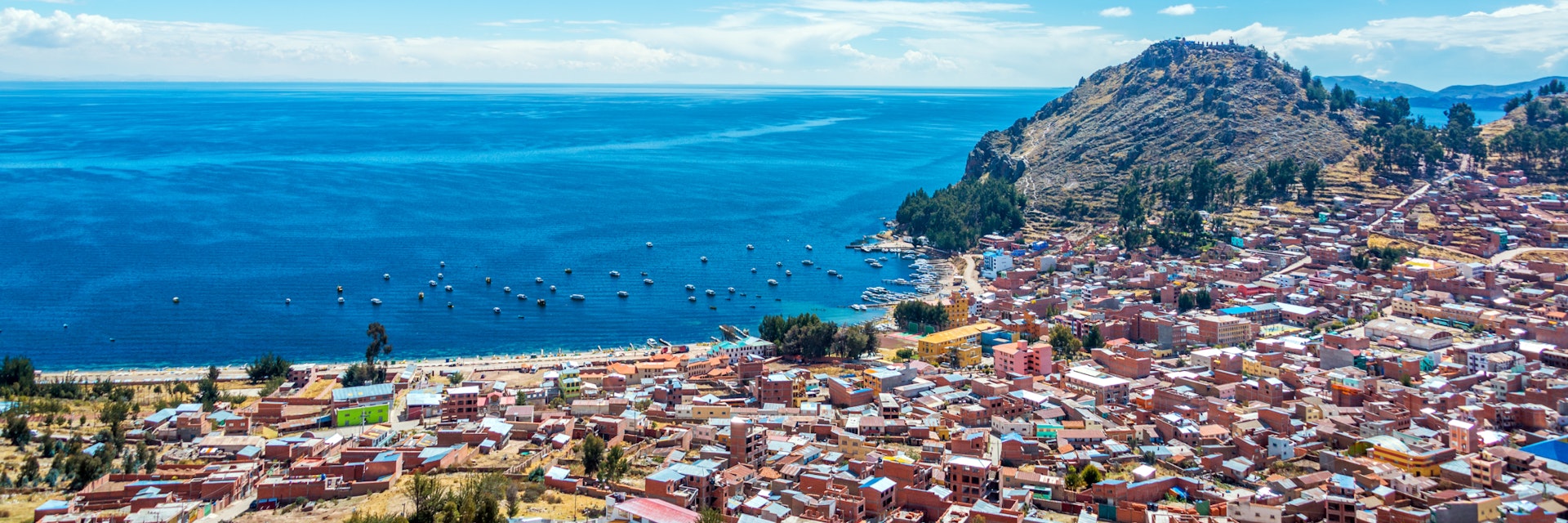
Lake Titicaca
Everything – and everyone – that sits beside this impressive body of water, from the traditional Aymará villages to the glacier-capped peaks of the Cordillera Real, seems to fall into the background in contrast with the shimmering opal jewel set into the spare altiplano earth. It is not hard to see how Inca legends came to credit Lake Titicaca with the birth of their civilization.
Attractions
Must-see attractions.

The sparkling white mudéjar (Moorish–style) cathedral, with its domes and colorful azulejos (blue Portuguese-style ceramic tiles), dominates the town…

This is a beautifully preserved village where the homes are built with flat stones joined in an earthen mortar. There is a stone church on the hilltop…

Isla del Sol
Yumani is the main village at the south end of the island. Most boats drop you at the village’s dock, about 200m downhill from the town proper. The small…

Horca del Inca
This hillside gate (named 'the Incan Gallows' by the Spaniards) is a fascinating pre-Incan astronomical observatory, surrounded by pierced rocks that…

Cerro Calvario
The summit can be reached in half an hour and is well worth the climb, especially for a view of the sunset. The trail begins near the church at the end of…

Escalera del Inca
Just uphill from the ferry dock at Yumani, along the beautifully reconstructed Escalera del Inca (Inca stairway), you’ll pass plenty of terraced gardens,…

Museo de Pariti
The stunning pots and ch’alladores (vases) found on Isla Pariti in 2004 are now on display at this tiny museum near the excavation site. Exhibits here…

Templo de las Vírgenes
The ruins of an Inca nunnery and temple dedicated to the Virgins of the Sun – also known as Ajlla Wasi or Iñak Uyu – occupy an amphitheater-like valley…
Plan with a local
Experience the real Bolivia
Let a local expert craft your dream trip.
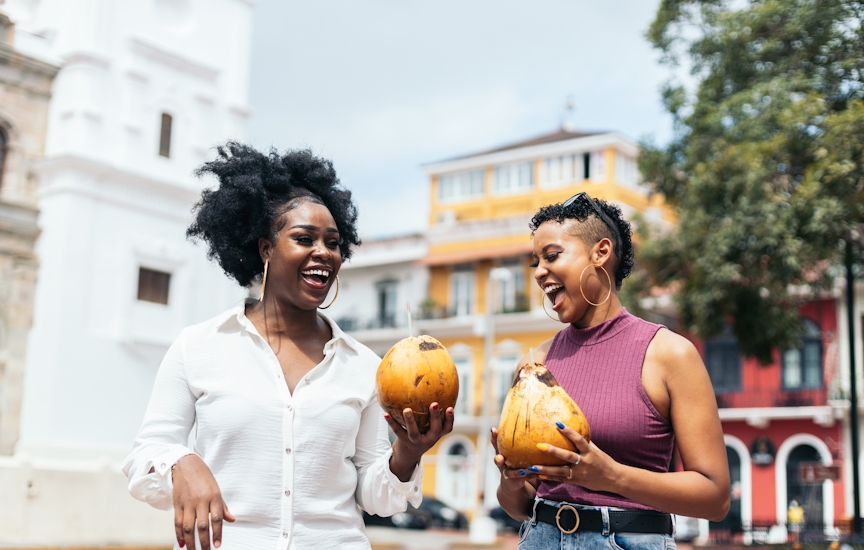
Latest stories from Lake Titicaca
Filter by interest:
- All Interests
- Adventure Travel
- Art & Culture
- Beaches, Coasts & Islands
- Food & Drink
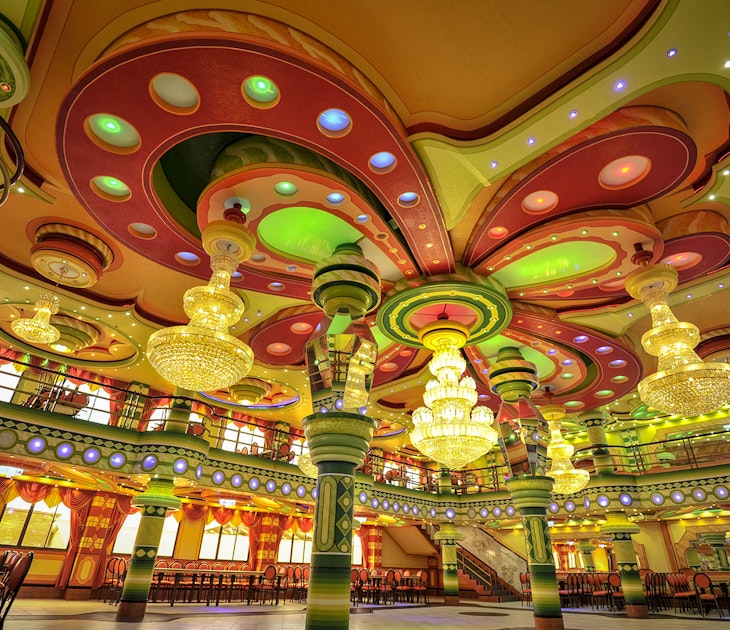
Feb 12, 2019 • 5 min read
Bolivia is a land of superlatives that holds within its borders earth’s largest salt flat, highest navigable lake and most biodiverse national park. These…
Lake Titicaca and beyond


- Salkantay Trek
- Inca Jungle Trek
- Huchuy Qosqo Trek
- Ausangate Trek
- Vilcabamba Trek
- Choquequirao Trek
- Huayna Picchu
- Altitude Sickness
- Packing List
- Humantay Lake
- Lake Titicaca
- Nazca Lines
- Rainbow Mountain
- Get A Trek Quote
Lake Titicaca – Ultimate Guide To The Birthplace of The Sun
Lake Titicaca is the world's highest large lake. This great body of water is also an important part of South America’s history. Some of Peru's most famous legends center around Titicaca.
There's more than just fish in these waters. An ancient city lies beneath the surface and ruins dot the shores. The islands (floating or not) are windows back in time to a simple way of life.
In this article, I will tell you how, why, and when you should make a trip to ‘The Birthplace of the Sun.
Looking for a short tour? Here are some of my favourite tours in Lake Titicaca:
- Combined Uros and Taquile Island Day Tour (leaves from Puno)
- 2-Day Budget Lake Titicaca Tour (incl. Uros, Amantani and Taquile)
- Full Day Puno Tour (incl. Lake Titicaca, Uros and Taquile)
- Floating Islands Day Tour (with lunch on Taquile)
- 2-Day Luxury Lake Titicaca Boat Tour (leaves from Cusco)
See more Lake Titicaca day tour options.
Lake Titicaca Facts
What does titicaca mean.
The name ‘Titicaca’ (pronounced ti-tee-kaa-ka) cannot be traced back to one single language.
In Aymara, Titi can mean either ‘puma’ or ‘lead’. In the same language, caca- means ‘white hairs on the head’. The best translation of Titicaca is ‘a grey or rock-coloured Puma’.
Others believe that the name comes from a sacred rock located on Isla del Sol (The Sun Island) called Thaksi Cala. It’s possible that with years of mispronunciation, Thaksi Cala could have developed into Titicaca.
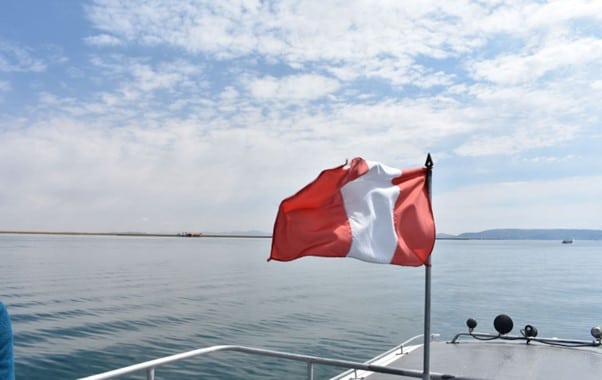
Is Lake Titicaca The Highest Lake In The World?
If you take a tour of the lake, you will likely hear that Titicaca is the highest lake in the world. This is not entirely true. If you have been to Huaraz in northern Peru (which I highly recommend), then you’ve probably trekked to higher, much smaller, lakes.
Titicaca is the highest navigable lake in the world. Basically, it is the biggest high-altitude lake. The mountain lakes are not big enough to accommodate boats.
The elevation of Lake Titicaca is 3,812m (12,507ft) above sea level. It fluctuates by about 2.5m (8.2 ft), getting higher over the rainy season. By sheer area and volume of water, Titicaca is also the largest lake in Latin America.
The highest point on Lake Titicaca is Pachamama mountain (4130m / 13, 550ft). You can hike up to this point on Amantani Island .
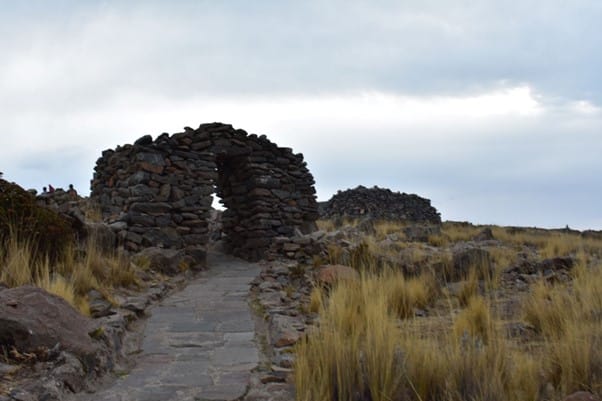
Pachamama on Amantani island
Is Lake Titicaca in Peru or Bolivia?
This is true - Lake Titicaca is in both Bolivia and Peru. The massive lake straddles the border between these countries.
There is a heated debate between Peruvians and Bolivians as to who has the bigger portion of Lake Titicaca. Regardless, you can reach beautiful islands and see epic sunsets on either side.
Please Note: You might be planning to cross the Yunguyo border between Puno (Peru) to Copacabana (Bolivia) by bus. If you take this route in either direction, the bus needs to cross the lake on a barge.
How Deep Is Lake Titicaca?
The average depth of Titicaca is between 140-180m (460-600ft). The deepest part of the lake is in the northeast corner, off Isla Soto. Here, the bed is 284m (932ft) below the surface. That’s equivalent to a 60-story building!
Is Lake Titicaca Shaped Like A Puma?
Well actually, Lake Titicaca is shaped more like a puma hunting a rabbit.
The puma is a sacred animal for the Incas, representing the power of the Earth and the land of the living. It's not surprising that this form is identified in many natural features.
Incan architects also designed settlements and structures in this shape. For example, the city of Cusco is shaped like a puma.
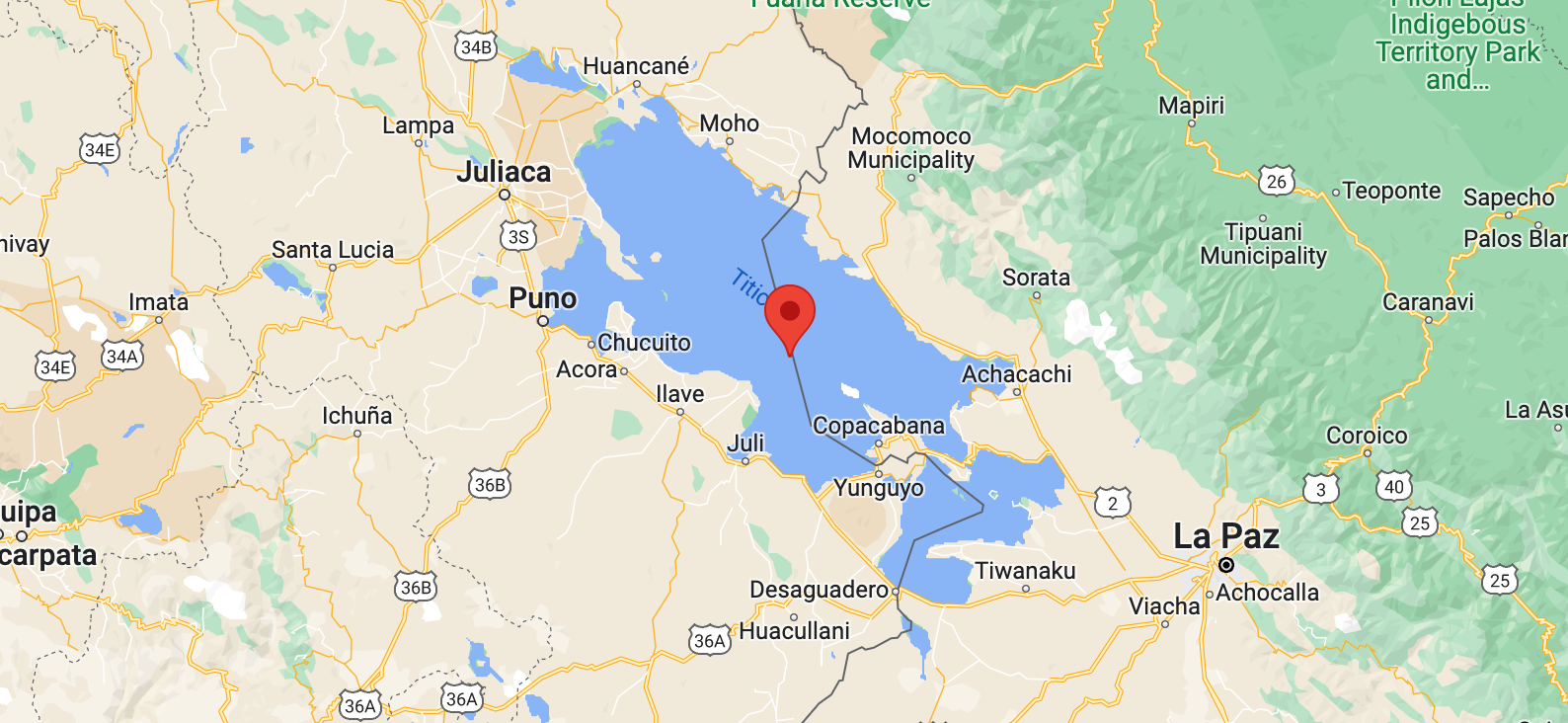
Is Lake Titicaca A Protected Area?
Titicaca was designated as a Ramsar wetland site in 1998. A large part of it is protected as a national reserve. 90% of the lake’s fish, including native Killifish and catfish, are found nowhere else in the world.
The lake, its shores, and islands are home to 530 aquatic animal species. This includes threatened species like the Flightless Titicaca grebe and the Titicaca Water frog . These massive amphibians can weigh up to 1kg (2.2. lbs.) and live in shallow areas.
Trout were introduced in 1939. These invasives make up a large part of the local diet. You’ll find fresh trout on the menu of almost every restaurant in Puno or Copacabana.
You may also like...
- Best restaurants in Cusco
Where to stay? Here are 7 of my favourite accommodation options on Lake Titicaca and in Copacabana:
- Los Uros Hostel (affordable and private accommodation)
- Duque Inn (private option at budget prices)
- Qelqatani Hotel (more upmarket option)
- Totora B&B (guest-house experience at backpacker prices)
- Hostal Sonia (cheap and comfortable accommodation)
- Hotel Onkel Inn Torres (pricey but with excellent views)
- Titicaca Lodge Peru (pricey but lavish accommodation)
See more Lake Titicaca and Copacabana accommodation options.
Why Is Lake Titicaca Important?
From a historical and cultural perspective, there are several reasons why Lake Titicaca is important to this region of South America.
History of Lake Titicaca
Lake Titicaca is thought to be over a million years old. People inhabited the lake area, even before the Incan civilization. An underwater Lake Titicaca temple and ruins have been found that date back as far as 1,500 years. This is believed to have been built by the Tiwanaku people .
There is also evidence of the Colla (Qulla) and Lupaka people (other pre-Incan societies) living around the lake. They left behind extensive terracing on the islands as well as ruins on the Lake’s shore.
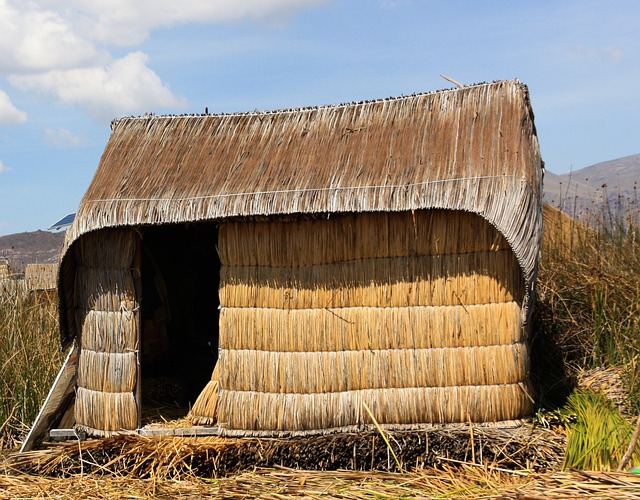
Reed houses on the Uros Islands
Lake Titicaca Legends
Lake Titicaca is extremely significant in terms of local culture. According to Peruvian mythology, Huiracocha, the god of creation, emerged from the lake and created the sun, moon, and stars.
According to Incan lore, this is where Manco Capac, the first Incan King, was born. Legend has it that he was sent down to Earth by the sun.
There have long been rumors of a lost city in the depths of Titicaca. Amazingly, this was proven true by the discovery of a submerged temple in 2000 . Part of a road as well as other buildings were also discovered on the lake bottom.
Lake Titicaca and its Cultural Heritage
Islanders on Lake Titicaca have beliefs and customs that date back centuries. Their style of crafting also shows strong influences from ancient Andean civilizations.
The community of Taquile ( known as the Taquilinos) is one such example. They are recognized internationally for their fine textile works. Different designs of Chuyo hats, bags, and belts represent a person’s relationship status. These items are an important symbol of the Taquilinos culture.
Descendants of an ancient people, the Uros, still live on floating reed islands . Islanders on Aymara practice the same farming methods of growing barley, quinoa and potatoes.
- Combined Uros and Taquile Island Day Tour (leaves from Puno)
Is Lake Titicaca Worth Visiting?
In short, yes. There are not many places where you have the opportunity to see a lake of this scale in South America. On top of that, the island communities are something completely unique.
To be honest, Lake Titicaca tours are very ‘foreigner curated’. Don’t let this put you off though. You can still have a great time for a low price. The Titicaca area is known for its knitting and embroidery work and it's a good place to buy authentic handmade souvenirs.
Overall, Titicaca is worth the trip from one of Peru’s major cities (see more on this below). If nothing else, you’ll have sole bragging rights after seeing the world's highest large lake.
Where Is Lake Titicaca Located?
Lake Titicaca is a huge freshwater lake located in the west of the South American continent, intersecting the borders of Peru and Bolivia. It is convenient to stop at Titicaca en route between these two countries.
There is a narrow channel that separates the lake into two parts - east and west. The Western part of the lake is in Peru’s Puno region and the Eastern Part lies in Bolivia’s La Paz region. In Peru, the smallest part is called Pequeño while it is known as Huinaymarca in Bolivia.
5 major rivers as well as nearly 20 smaller tributaries feed into Lake Titicaca. It is 190km (120 miles) long and 80km (50 miles) at its widest. The surface area of Lake Titicaca is 8,300km² (3,200 square miles).
How To Get From Cusco To Lake Titicaca?
From Cusco, it is most practical to head to Puno to access Lake Titicaca. I will provide more details on getting to Puno from Cusco below.
Fly From Cusco To Puno
The fastest way to get from Cusco to Puno is by plane, which is a one-hour flight. LATAM and SKY Airlines currently offer this route with one-way tickets costing $60 and up.
Please Note: Juliaca Airport is about 44km (27 miles) outside of Puno. You will need to take a taxi to the airport or a transfer from your accommodation near the lake.
Cusco-Puno By Bus
The cheapest way to get to Lake Titicaca is by bus from Cusco or Arequipa. Several companies offer this route during the day and as a sleeper bus. Travel time by bus from Cusco to Lake Titicaca (Puno) is between 8-9 hours.
The cost of bus tickets from Cusco to Puno start from about 40 soles / $10. I recommend shelling out a bit extra and traveling with a good bus company. In my humble opinion, Cruz Del Sur is the most comfortable and reliable operator offering this route.
Cusco-Arequipa-Puno By Bus
If you have the time and budget, I’d recommend taking a detour and spending a few days at Arequipa. This beautiful city has a calm atmosphere and gives you a good opportunity to catch your breath. If you need more adrenaline, raft down rapids or trek up a volcano (see what to do in Arequipa ).
The travel time from Cusco to Arequipa is around 8 hours. I was very happy with the Oltursa bus service for this route. For 49 soles ($12), they included water and a snack.
From Arequipa, you can take another overnight bus with Cruz Del Sur to Puno (which costs about 55 soles / $14).

You Arrive In Puno Before 6 am, Now What?
If you take an overnight bus, you will arrive very early in Puno. I highly recommend heading to Ricos Pan from here. This is one of the very few cafes in Peru that is open at 6 am. The restaurant has strong WiFi connectivity, good coffee, and wholesome breakfast options. They also serve the best baked cheesecake in the country.
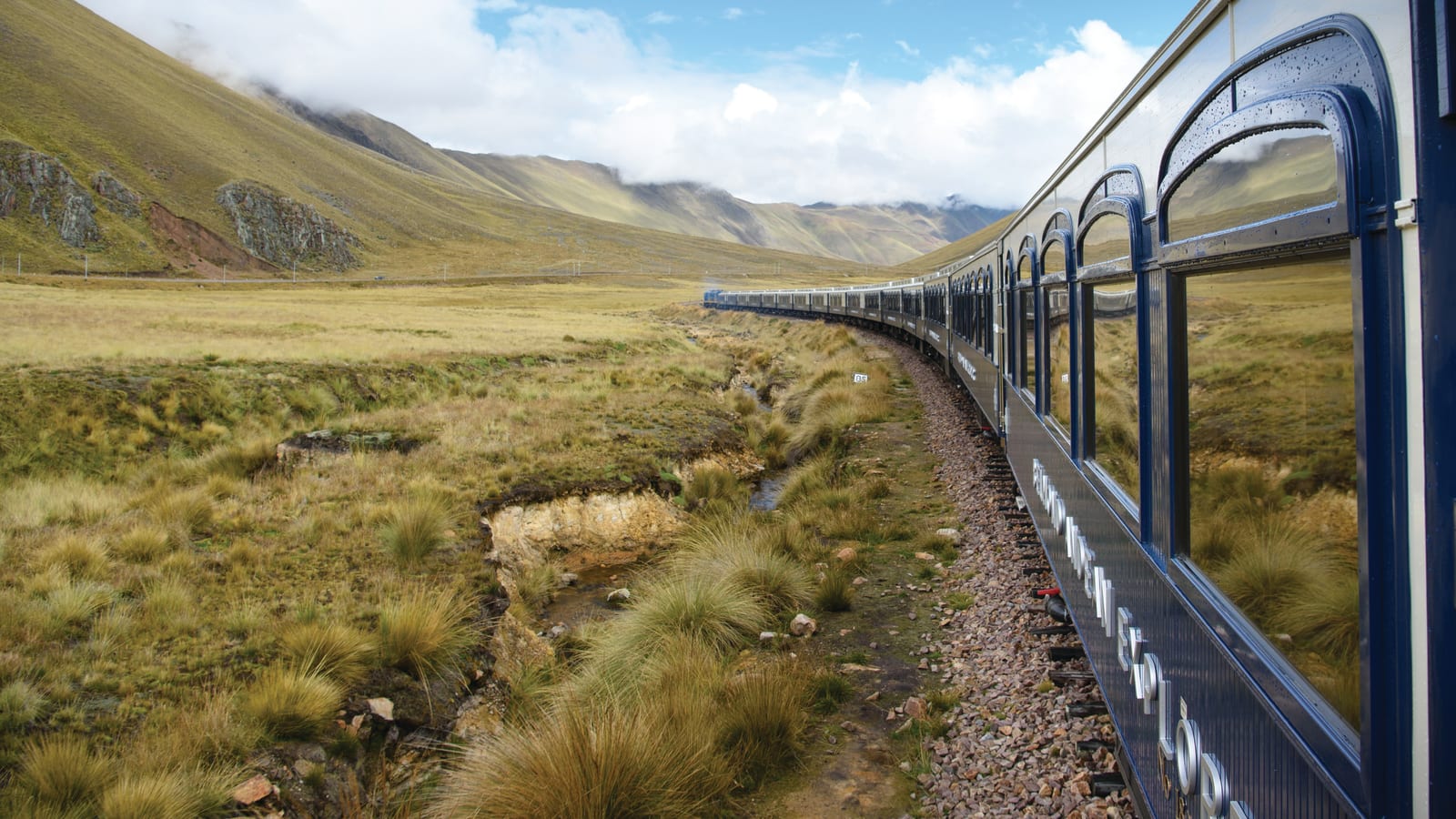
Cusco-Puno route on the Belmond Andean Explorer luxury train
Cusco to Puno By Train - Travel to Lake Titicaca in Luxury
Looking for something different? You can also get to LakeTiticaca by rail. PeruRail runs a touristic train route between Cusco and Puno, which takes 10.5 hours. This route is available every day except Tuesdays.
This is a slightly longer way to get to Titicaca, but you will be riding in style the whole way! This luxury train ride includes gourmet meals and onboard entertainment. Tickets go for around $400 for a return trip.
There is an even more luxurious train option than this. The Belmond Andean Explorer also has a Cusco-Puno-Cusco route. With private sleeper cabins and inclusive cocktails, this is a 5-star hotel on wheels. Be ready to shell out about $1,200 per person for a one way ticket.
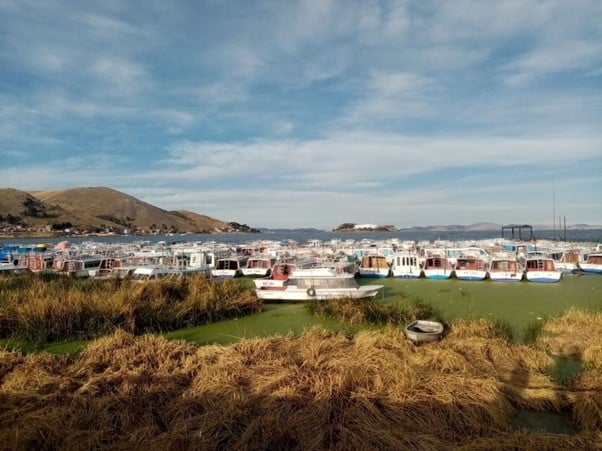
Puno harbor
Visiting Lake Titicaca In Peru
Puno is the most convenient town from which to access Lake Titicaca.
There is an Airport at Puno with daily flights to and from Lima and Arequipa.
Most people only allocate enough time to Puno to visit the lake itself. If you have some time, this small town is worth an extra day. From Puno, you can take a day trip to the floating islands of Uros . You can also visit Taquile and Amnatani from here.
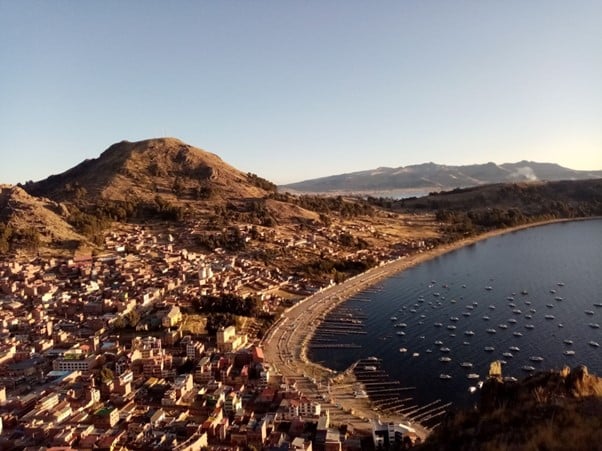
Visiting Lake Titicaca In Bolivia
If you are traveling from Bolivia to Puno, you may want to make a stop at Copacabana. This is a convenient town to spend a day or two in and visit the lake.
You can take a day trip or stay overnight on Isla del Sol. Boats run twice a day at 8:30 am and 1:30 pm, returning at 3:30 pm and 5 pm. Here, you can see the Chinkana Labyrinth , believed to be a training center for spiritual leaders.
What Is There To See On Lake Titicaca?
There are several things worth seeing while visiting Lake Titicaca .
Visit Titicaca’s Islands
Titicaca is most famous for its floating reed islands, known as the Islas Uros (Uros Islands). The floating islands are easily accessible from the coastal town of Puno. There are currently about 100 of these islands and they are multiplying as the islanders’ families expand.
You can visit the floating islands as a day trip or as part of a multi-island tour from Puno. If you opt for a multi-island tour, you will likely also visit Taquile. This is one of a handful of permanent islands on Lake Titicaca.
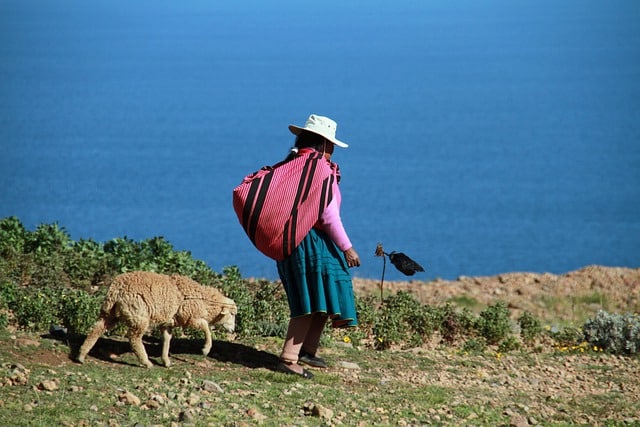
Floating islands of Uros
Spend time with an Island Family
If you enjoy more immersive experiences, you can spend the night on an Island in a village home. This is a great way to experience daily life and traditions within Lake Titicaca’s farming communities.
If you want to find out what it’s like to spend the night on one of Titicaca’s islands, you can read my personal account of an island homestay.
Ruins around Lake Titicaca
There are plenty of land-based ruins to see around Lake Titicaca. Whether in Puno or Copacabana, many ruin sites are easily accessible to visitors. Some of the Titicaca ruins even pre-date the Incan empire.
- Ruins on the Inca trail
- Inca trail facts
Lake Titicaca is superb for birdwatching. There are hundreds of different waterfowl who live in this aquatic habitat. Look out for Puno Ibis, flightless grebe, and Chilean pink flamingos.
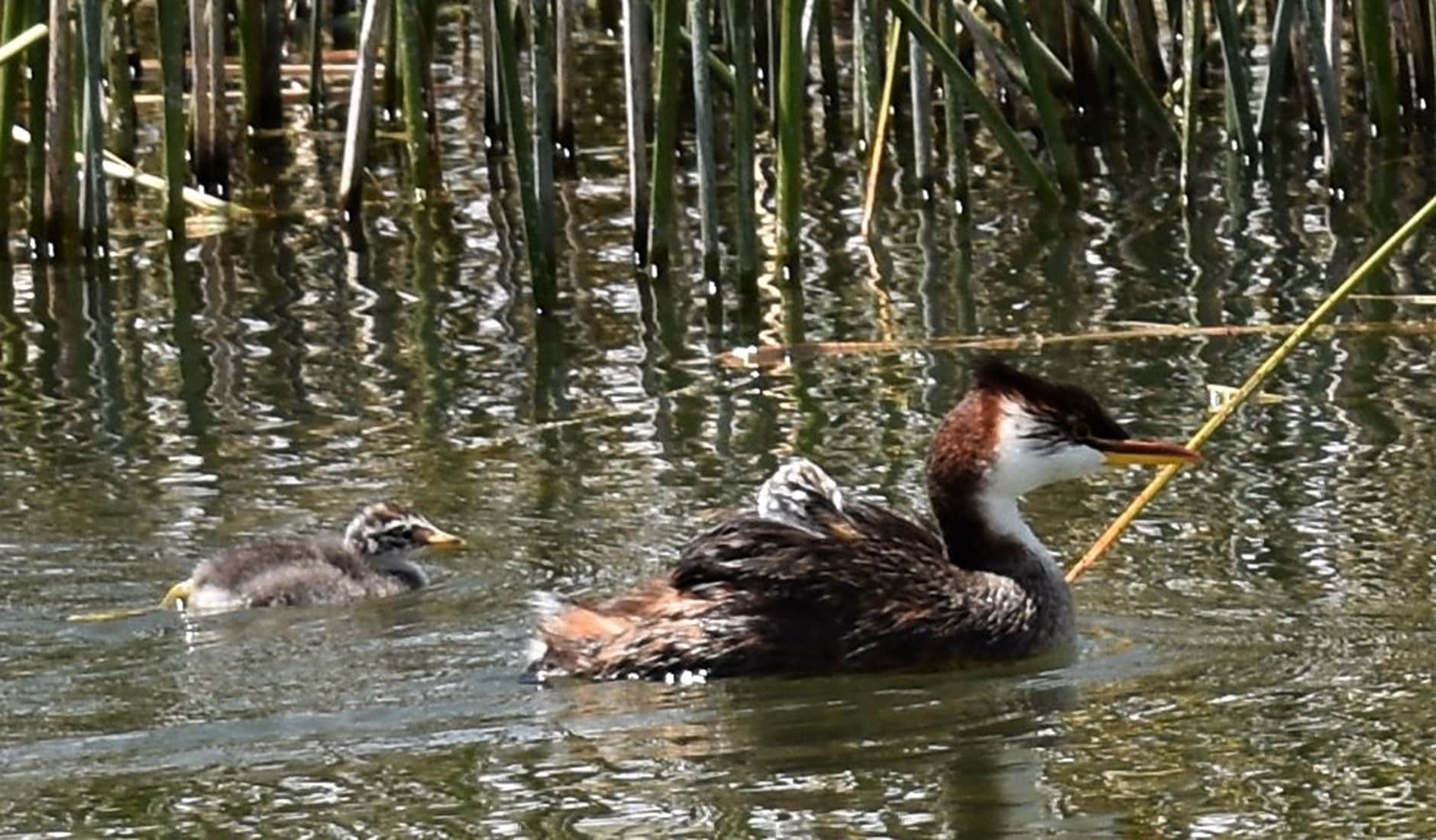
A grebe with chicks on Lake Titicaca
Can you swim in Lake Titicaca?
Technically, you can swim in Lake Titicaca. It's a huge lake and no one is going to stop you from wading in.
Before you pack your swimsuit though, know that you probably won't want to take a dip in Lake Titicaca. The water is uncomfortably cold. If you are determined to swim, brace yourself for temperatures between 10-14°C (50- 57°F).
Also, be aware that there is quite a bit of water pollution from the nearby towns.
The water in Lake Titicaca is slightly brackish too, its salinity ranging from 5.2-5.5 parts per 1000.
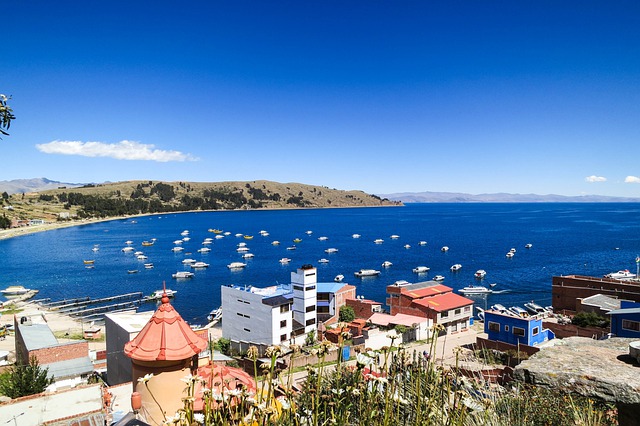
Copacabana section of Lake Titicaca
Best Time To Visit Lake Titicaca
Winter (May-October) is very dry, making it the best time to visit Lake Titicaca. During this time, the days are pleasant and mild. Be sure to pack warm clothing as evenings get icy cold.
If you want to catch the Festival de la Virgen de la Candelaria , visit Titicaca in the first two weeks of February. This is the biggest festival of the year and is celebrated in both Puno and Copacabana.
The shoulder season months of April and October offer a good balance. Chances are good for decent weather during these months. Plus, tours and accommodation are usually discounted.
On average, the lake receives 600mm of rain a year, most of which falls during thunderstorms in the summer (December-March). This is not the ideal time to be hiking around the islands.
Where To Stay On Lake Titicaca
Where you stay around Lake Titicaca depends on your budget. There is a selection of hostels as well as fancier hotels to choose from. This applies to both the Peruvian and Bolivian sides of Lake Titicaca.
Read on for more reviews and recommendations of Lake Titicaca Hotels .
Alison Macallister
With a degree in Nature Conservation and experience working with wildlife including the Big 5, Alison works as a guide for a 5-star reserve. She enjoys sharing her passion for all things nature-related. She enjoys hiking, horseriding, 4x4 driving and kayaking.
Leave a Reply
Your email address will not be published. Required fields are marked
Name * * * *
Email * * * *
Get a quote from our recommended local trek operator in Peru
Lake Titicaca Peru – Complete Visitor’s Guide
I guarantee you would have either heard of or seen pictures of Lake Titicaca Peru but you may not know too much about it.
Well to start off with, it’s the biggest lake in South America and also the highest lake in the world! Pretty impressive right?
I spent one full day exploring Lake Titicaca and have put together this travel guide to help you plan your trip ahead of time.
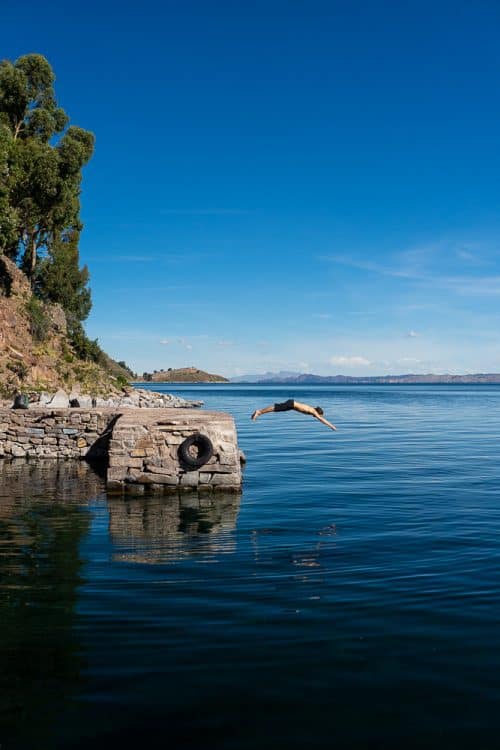
Table of Contents
WHERE IS LAKE TITICACA?
Lake Titicaca is located on the border of Bolivia and Peru, though mostly visited from a small city called Puno which is located on the Peruvian side of the lake. From Cusco to Lake Titicaca, the journey is around eight hours.
If you are wondering about Lake Titicaca weather, the best time to visit is between February and November for moderate temperatures and minimal rainfall. December and January are the wettest months in this region.
Click here to see the location on Google maps.
HOW TO GET TO LAKE TITICACA PERU
The easiest way to reach Puno Titicaca is by bus. The most reputable bus company in Peru that I discovered to be the most comfortable and reliable is Peru Hop.
They offer many different bus routes and itineraries throughout Peru and I highly recommend traveling with them.
For this particular trip, the Peru Hop bus departs from Cusco at 22:00 pm and arrives the following morning in Puno Titicaca at 06:00 am.
Click Here to visit the Peru Hop website for more information and to book your bus tickets online.
Have you got travel insurance for your trip?!
We all know accidents can happen and having Heymondo Insurance will save you thousands of dollars if something goes wrong.
Heymondo offers low-cost Travel Insurance to keep you covered on all your adventures.
WHERE TO BOOK LAKE TITICACA TOURS
The only way to explore the lake is by organizing a Lake Titicaca Tour which can either be done in Puno at a tourist office when you arrive or by booking online ahead of time with a tour company.
I would recommend booking a Lake Titicaca Tour online with Get Your Guide to get the best rates. There are dozens of tours available to choose from.
Click Here to search all Lake Titicaca Tours
LAKE TITICACA FACTS
Before I tell you more about my experience on the tour, here are some fun facts:
- Lake Titicaca Altitude: 3, 812 meters above sea level (the highest lake in the world)
- How Big Is Lake Titicaca: 8, 372 km 2 surface area, 191 km in length, 81 km in width
- How Deep Is Lake Titicaca: 281 meters deep
RELATED ARTICLE: 3 WEEK PERU ITINERARY
The Most Functional Day Pack EVER!
The Nomatic 20L Travel Pack is perfect for everyday use and for those shorter 1-3 day adventures.
With 20+ innovative features and a minimalist design, this functional day pack gives you confidence for life on the move!
LAKE TITICACA TOUR
On this particular tour, the places we explored are two of the most visited islands on Lago Titicaca – Islas Flotantes (the floating islands of Uros) and Isla Taquile (Taquile Island)
My friends and I were picked up from our hotel at around 6:45 am and driven down to Puno harbor where we jumped on board our tour boat for the day.
The first leg of our tour was a thirty-minute cruise out onto the lake and arriving at around 7:30 am to Islas Flotantes, the famous floating islands of Uros.
These floating islands are constructed entirely from weeds that grow abundantly in the lake.
Islas Flotantes is inhabited by the indigenous people known as Uros and up to six families live on one single floating island.
When we visited, the Uros people showed us around their section of floating land, demonstrated how they make the islands by weaving the reeds, and taught us a little about their culture and daily lives on the lake.
Find All → Homestays & Hotels in Puno
From Islas Flotanates, our tour continued to Taquile Island, which took around two hours across the lake on the boat. We arrived on the north side of Taquile Island at around 11:30 am and followed the steep cobblestone path to the main village square.
Taquile Island is inhabited by the Taquileños people who are known for their fine handwoven textiles and clothing, which are regarded as the highest-quality handicrafts in Peru.
After wandering around some of the textile stores in the plaza we sat down to eat lunch in one of the restaurants. My friends and I ordered grilled fish and vegetables, sourced directly from the lake and it was absolutely mouthwatering!
We then made tracks over to the southern side of Taquile Island which lead down through local villages boasting amazing views of the lake and down to another port where the boat was waiting to pick us up.
The day was coming to an end by this stage and we made the two-hour boat cruise back to Puno, catching a beautiful sunset. Dusk had fallen by the time we had arrived in Puno and we were transferred back to our hotel.
All in all, a day tour on Lake Titicaca is a MUST and I highly recommend adding it to your Peru itinerary!
Related Article → 10 Things To Do In Cusco
The BEST reusable water bottle for travel!
The GRAYL GeoPress is a top-rated reusable water bottle perfect for backpacking, hiking, and traveling.
It allows you to purify water from anywhere and keeps you safe from all waterborne diseases.
Get a GeoPress today and never buy single-use plastic bottles again. Mama Earth will thank you for it!
WHERE TO STAY IN PUNO
Puno has hundreds of accommodation options to choose from, so I have narrowed it down to a few of the best places to stay in Puno to fit the needs of budget backpackers, luxury travelers, and everyone in between.
See the list of accommodations below that I personally recommend:
Luxury: Libertador Lago Titicaca Puno
The only 5-star hotel in Puno! The Libertador offers panoramic views over the lake, featuring a spa, hot tub, sauna, gym, and free wifi. The rooms are air-conditioned with a private bathroom, tv, and minibar. An in-house restaurant serving up Andean or international cuisine and breakfast is included!
Mid Range: Tierra Viva Puno Plaza
Centrally located near Puno’s main square, the Tierra Viva Puno Plaza offers spacious rooms, stylish furnishing, private bathrooms, and balconies. Perfect for couples and rated for the best value in Puno.
Budget: Puno Hostel
This 3-star hostel is perfect for backpackers on a budget. Puno Hostel has dorm rooms and private rooms available, a kitchen to do your own cooking and free bikes are available for guests to explore Puno city! This place really is bang for your buck!
FOR ALL OTHER PLACES TO STAY IN PUNO, SEARCH ON BOOKING.COM
What to pack for peru.
When visiting Peru, here is a list of items I highly recommend bringing with you:
Must-Have Travel Essentials
Hidden money wallet.
Keep your cash and other valuables safe with this anti-theft hidden money wallet!
Reusable Water Bottle
The GRAYL GeoPress is the best reusable bottle that allows you to purify water from anywhere!
Travel Backpack
The Nomatic Travel Backpack has 20+ innovative features, perfect for everyday use!
Quick-Dry Travel Towel
The most compact, lightweight, and quick-dry towel for traveling!
Portable PowerBank
Keep your phone, laptop, and accessories charged while you’re on the go with the Anker PowerBank!
More Peru Travel Guides
Click the button below to view all articles related to Peru!
FINAL THOUGHTS – LAKE TITICACA
If you have any questions, please leave me a comment below this post, and I will get back to you as soon as I can. For a quicker response, be sure to join Jonny Melon’s Travel Tribe on Facebook and post your questions or recommendations to our awesome community.
TRAVEL RESOURCES FOR YOUR NEXT TRIP
Whether you’re a seasoned traveler or it’s your first trip overseas, here are some useful travel resources to help you kick-start your next adventure!
Search and book accommodation worldwide.
Compare and book cheap flights to anywhere.
Find tickets, tours, and experiences around the world.
Book buses, trains, and transfers online in advance.
Search all rental cars in your next destination.
Need travel insurance for your next trip?
THANKS FOR READING
Hey friend, thanks for reading this guide!
Please know this post may contain affiliate links. When making a purchase through one of my links, I earn a small kickback at no extra cost to you and it’s a big help to keep the site up and running. Rest assured, I only promote products and services that I personally use and recommend.
Click here to find out how you can support the site organically .
Many thanks!
PIN IT FOR LATER
Leave a comment Cancel reply
Notify me of follow-up comments via e-mail.
Plan Your Trip
Travel Guides
Destinations
Hotel Guides
Find Best Tours
Travel Gear
Travel Resources
How To Start A Blog
Photography Guides
Support the site
Follow On Socials
© 2024 Jonny Melon Adventure Travel Blog. All rights reserved.
Privacy Policy | Terms | Sitemap
Is Lake Titicaca worth visiting? (2023)
Disclaimer: This post contains affiliate links. At no cost to you, I might earn a small commission if you make a purchase through the links in this article.
Lake Titicaca’s azure blue waters framed by the snow-capped Andes are a sight to behold. Imagine yourself spending time on the floating islands of Ancient Lake Titicaca and mingling with locals who get to call this place home. Once you spend time here, you will understand why it’s called one of the most beautiful places to visit in South America .
Where is Lake Titicaca?
Shared by Peru and Bolivia, Lake Titicaca’s elevation of 3,812 meters (12,500 feet) is the highest navigable lake in the world. It’s the largest freshwater lake in South America and is fed by rain and meltwater from glaciers on the sierras that abut the Altiplano.
If you are wondering whether Lake Titicaca is worth visiting, this article will help you figure out whether you should add it to your South America itinerary.
Wha t does the name of Lake Titicaca mean?
Lake Titicaca pronunciation: Layk-ti-tee-kaa-kaa
The origin of the name Titicaca still needs to be discovered. However, it has been translated to “Rock Puma” due to its shape that resembles a Puma hunting a rabbit.
Puno Lago Titicaca consists of more than 120 floating islands artificial from bundles of dried totora reeds. These islands are built around the shores of an internal lake, connected by narrow, shallow canals and reached only by Uros reed boats and rowboats.
Lake Titicaca Elevation
With Lake Titicaca’s altitude sitting at 3812 meters (12,507 feet), it is advisable to acclimatize. The closest cities to lake Titicaca are Puno in Peru and Copacabana in Bolivia. Unfortunately, Puno’s altitude is 3 827m, and Copacabana’s is 3,841 meters (12,602 feet), which means it’s best to visit spend time Arequipa or Cusco to acclimatize before making your way here.
Lake Titicaca Altitude Sickness
High Altitude sickness is a severe condition that affects many people every day, causing Hypoxia due to reduced oxygen. To avoid getting hypoxia on your Lake Titicaca voyage, take the necessary precautions like drinking plenty of water and taking time to acclimatize.
Always watch your bags and belongings, especially when traveling long distances. Don’t flash around expensive items like jewelry, electronic items, and money on your Lake Titicaca tour. Use your common sense to avoid being a victim of pickpocketing or scams.
Lake Titicaca Facts
- The Uros Islands are home to a unique indigenous population of about 2,000 Uros who live isolated on the floating Islands of Lake Titicaca.
- During the 16th century, the remote islands of Amantani and Taquile islands were used as high-security prisons.
- The indigenous people of Bolivia consist of the Uru-Chipaya, the Uru Murato, and the Uru-Iruito, who inhabits Lake Titicaca on the Bolivian side.
Titicaca National Reservation
The primary purpose of the Titicaca National Park reserve is to preserve the landscapes and ecosystems. Titicaca National Reservation consists of about 60 species of aquatic birds, 18 amphibian species, and a variety of fish species.
Visiting the floating islands of Uros
The floating islands of Uros is one of the most popular attraction on Lake Titicaca, and you can easily book a tour in Puno. However, many visitors report that the place has become a tourist trap, as local people who traditionally lived off fishing, now found out that they can make money off tourists.
Still, a visit to the floating islands of Uros is a popular option for those travelers who have little time, and want to get a basic introduction to Lake Titicaca when staying on the Peruvian side.
Best tours of Uros floating islands
Amantani island .
Amanati island is a perfect alternative to the floating islands of Uros, as it offers a more authentic experience. The island is home to Pacha Mama and Pacha Papa, two historic sites that have a special meaning to local people.
✅ THIS POPULAR TOUR INCLUDES AN OVERNIGHT STAY ON THE AMANATI ISLAND
Many tours include a stay on the Amanati Island offered by a local host and offers an opportunity to try some traditional food from the region.
Lake Titicaca weather
With a borderline subtropical highland climate, one can expect primarily cold temperatures on Lake Titicaca tours throughout the year. Winters are dry, with freezing temperatures throughout the night but getting warmer later in the day.
When is the Best Time to Visit Lake Titicaca ?
Unless you plan to visit the Candelaria Celebration in Puno, tour Lake Titicaca during the dry season to enjoy clear skies and plenty of sunshine. The Puno region has two seasons, the wet and dry seasons. With bright blue skies and sunny days between April and October, one can expect a lower chance of rain. The nights, however, are always cold due to Lake Titicaca’s altitude.
Best Things to do in Lake Titicaca
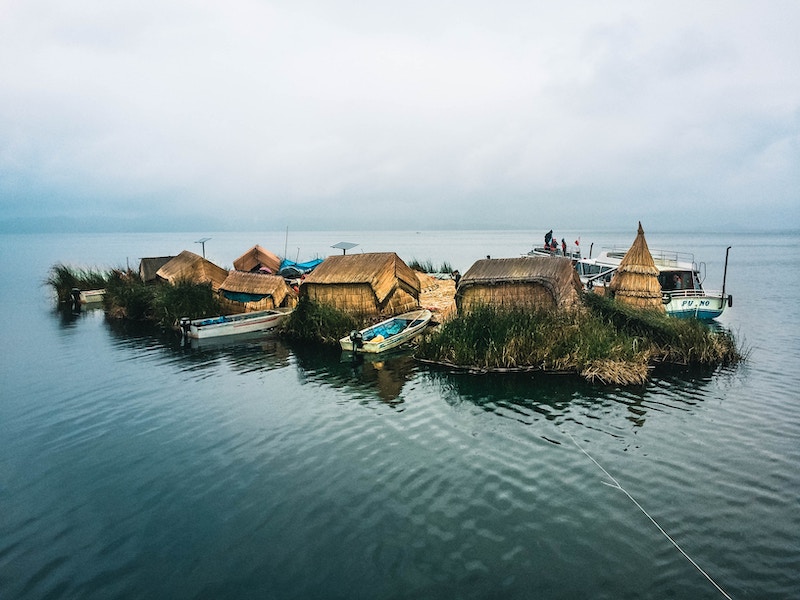
1. Book one of the Lake Titicaca Tours
Book a Lake Titicaca tour to experience the life and traditions of Uros. During a full-day Lake Titicaca Tour, members from the community will take you around the island. They will explain how they build floating islands using growing reeds and take you on their reed boats. You’ll also get to see their handicrafts and can buy some souvenirs.
A Lake Titicaca Homestay is one of the best ways to experience the Uros culture. During a homestay, you’ll overnight on one of the floating reed Islands, which promises a unique experience.
2. Explore the Uros Islands of Lake Titicaca
The central Islands are Taquile, Amantani on the Peruvian side and Isla del Sol, Isla de la Luna, and Suriki on the Bolivian side.
3. Visit Taquile Island
Isla Taquile is located 45 km off the coast of Puno on the Peru side of Lake Titicaca. With the highest point of 4,050 meters, the island is home to about 2,000 Quechua population, mainly fishermen, farmers, and weavers.
✅ THIS TOUR INCLUDES A STOP ON TAQUILE ISLAND
Attracting many tourists, the island is known for its high-quality handwoven products. Besides the picturesque views of the Lake, one can visit the sandy beach and historical sites, such as the Mulsina Pata viewing point.
Mountain biking is a fun way of exploring the island. For a complete adventure, book a sea Kayaking Lake Titicaca tour.
4. Amantani Island
The Island of Amantani is 40 km from Puno, only a few kilometers North of Tequila, and the least visited island. Amantani Lake Titicaca Tours include a homestay where one can glimpse the inhabitants’ personal lives.
Among the most famous ruins on the island among the best-known ruins on the island are Pachamama (Mother Earth) and also Pachapapa (Father Earth).
The island offers schools, a health clinic, and stores selling essentials. A generator provides electricity for a couple of hours each day.
Isla Del Sol is one of the largest islands situated on the Bolivian side, providing Lake Titicaca tour boat trips to the town of Copacabana.
5. Luquina Island
The charming town of Luquina lies on a pristine corner of Puno and is a 2,5-hour motorboat trip. Peaceful Luquina is a charming town with scenic views of Lake Titicaca.
Overnight on the island in one of the tiny picturesque casitas overlooking the lake. Take a hike up one of the hills to watch a breathtaking sunset.
Treat yourself to a tasty meal of grilled Trout with rice and salad made from fresh produce at one of the local restaurants.
Best places to visit around Lake Titicaca
1. puno city.
The city of Puno is an excellent place where to start your Lake Titicaca tour. But is Puno Peru worth visiting? With its 130,000 inhabitants, Puno is known for the following attractions:
- The Andeon Baroque-style Cathedral is found in the town’s main square.
- A sacred image of the Virgin of Candelaria inside the main Altar in Puno. The veneration of the Virgin of Candelaria is a fusion of diverse religious beliefs and practices.
- The Biggest festivity in Peru is the “Mamacha Candelaria”. Puno, known as the Altiplano folkloric Capital, is celebrated with traditional music and dances in bright-colored costumes and fireworks. Every day during the first two weeks in February, more than 40,000 dancers and 9,000 musicians participate in the celebration associated with “Pacha-Mama”, also known as mother earth.
Located 45 km northwest of Lake Titicaca, the transit hub of Juliaca is the largest city on the Altiplano. Juliaca sits at 3 825 meters above sea level and, with its 276,110 inhabitants, is the largest trade center in the Puno region.
Best things to do and see in Juliaca
- Galería Artesanal Las Calceteras market is where one will find a variety of handicrafts and quality wool products.
- The ruins of Sillustani, a funeral tower complex where dignitaries were buried on the hills of the LagoUmayo peninsula and constructed of large boulders with some as high as 12 meters.
- The Plaza for Templo de la Merced church and Iglesia Matriz de Santa Catalina church.
How to get to Lake Titicaca
You can reach Titicaca by bus from Puno and Cusco . Another option is to purchase a guided tour or rent a car.
Lima to Lake Titicaca
Lima is the capital of Peru, and the largest city in the country. While it’s possible to visit Lake Titicaca from Lima, it’s the longest and most expensive trip, so it’s best to make a stop in Cusco before continuing to Lake Titicaca.
Buses from Lima to Lake Titicaca
Although Peruhop busses from Lima to Lake Titicaca is a direct journey, it’s a long journey that takes about 21 hours. Peru Hop’s long passes allow one to hop on and off throughout Peru. These extra stops are accessible on PeruHop trips from Lima to Lake Titicaca and are an excellent opportunity to explore more of Peru’s hidden gems.
Other Peru gems are accessible from the Peru Hop trip from Lima to Lake Titicaca, such as the secret slave tunnels at Hacienda San Jose and the Nazca lines viewing tower.
Lima to Lake Titicaca by plane
The best and fastest option to travel from Lima to Lake Titicaca is by plane. Flights from Lima to Juliaca take about 1 hour and 40 minutes. Juliaca is the capital of San Román Province, located in the Puno Region of South Eastern Peru.
Puno to Lake Titicaca
Peruways offer an easy and fast way to visit the Titicaca lake islands from Puno. Popular Peruways provide road transport from central Puno. Afterward, visitors transfer to the Uros floating islands by ferry or on a Lake Titicaca tour.
Cusco to Puno
Andean explorer cusco to puno train.
Although trains from Cusco to Lake Titicaca take the longest, it promises an unforgettable journey. Crossing the Peruvian Andes, these train journeys are known as South America’s most scenic train rides. Altogether, one of the Top 10 Train rides in the World.
PeruRail Titicaca Train
Traveling by PeruRail Titicaca train is the most luxurious way; one gets entertained by live music, folklore shows, and excellent food while passing through spectacular landscapes.
The train stops at 4 335 m on the La Raya pass during the scenic ride. The train journey by Train to Lake Titicaca is 10,5 hours.
Cusco to Puno flight
Although the Julianca Cusco flights from Cusco to Puno are not the most popular, it is much cheaper than taking the train. The closest airport is in Juliaca, an hour’s drive from Puno. A flight from Cusco to Juliaca takes about 1 hour with Avianca, Viva Air, or LATAM Airlines.
Cusco to Lake Titicaca by Bus
Although the bus to Puno from Cusco is the cheapest transport to Lake Titicaca, it can be the most inconvenient way of traveling.
Should you decide on a Cusco to Lake Titicaca Bus, you should choose a more expensive bus companies like Turismomer to ensure a more pleasurable ride, as they offer more amenities.
Turismo is a comfortable way of traveling by bus from Cusco to Puno, taking about 7 hours. Besides that, the Turismo bus Company boasts the most entertaining and safe ride along the Sun’s Route.
Cusco to Juliaca bus
The Juliaca Cusco bus is an affordable option for those who want to explore Juliaca city. Transportes Libertad also boasts about their 6-hour bus ride from Juliaca to Cusco.
Renting a car for your trip to Lake Titicaca
While driving a car to Lake Titicaca is an option, but you need a fair share of adventure spirit.The roads in the Altiplano region can be rough and hard to navigate, so you should be prepared to find your way around with minimal directions. However, renting a car is always a good idea if you like to explore more of the region, and not rely on guided tours and public transportation.
How to get from Juliaca Airport to Puno?
There is no direct connection from Juliaca Airport (JUL) to Puno. You can take a taxi to Puno or travel to Puno by bus.
Is Lake Titicaca worth visiting: FAQ’s
How much time do i need in lake titicaca.
You need about 2-3 in Lake Titicaca or possibly more if you want to explore the surrounding areas. If you only have one day in Lake Titicaca, you will not have a lot of time, and most likely see only the main highlights like the floating islands of the Uros.
Is Puno Peru worth visiting?
Puno is the gateway to the floating island of the Uros, however, it also offers many other highlights including the colonial cathedral of Puno, Jiron De Lima Street, where you can find restaurants, cafes and souvenirs vendors; and the ancient Sillustani Cemetery.
Should I visit the Peruvian or Bolivian side of Lake Titicaca?
Most people who visit Lake Titicaca, head to the Peruvian side, as Peru is more touristy than Bolivia thanks to Machu Picchu and a handful of other famous landmarks. Yet, the Bolivian side offers a more authentic experience, as it sees fewer visitors and feels more tranquil.
Best tours of Lake Titicaca from La Paz, Bolivia
Best hotels in lake titicaca.
- Titilaka Lodge is one of the best hotels on the banks of Lake Titicaca. The 5-star Titilaka luxury hotel is high up in the Peruvian Alto. Prime resorts, like Titilaka, include a variety of excursions and activities.
- Casa Andina Premium Puno is a 15-minute drive from Puno to Lake Titicaca. The Lake offers rooms overlooking the Lake and lake excursions.
- The Casa Andina Standard Puno located only 500 meters from the main square in Puno, is a no-frill 3-star hotel offering professional services.
So is Lake Titicaca worth visiting?
Lake Titicaca is one of the best places to visit in South America for the adventurous traveler. Located along the border of Peru and Bolivia, this natural attraction is home to many indigenous communities and some of the most breathtaking landscapes in the Andes.
Whether you decide to visit Lake Titicaca by guided tour, public bus, or car rental, you will have a fantastic time in this gorgeous place.
This guest post contributed by Mimmie, adventure traveler and owner of adventuretravelcoach.com
- South America
- 10 Things To Know Before...
10 Things to Know Before Visiting Lake Titicaca, Bolivia

Famed for its tranquil crystalline waters which shimmer beneath majestic snowcapped peaks, Lake Titicaca is among Bolivia’s most magical destinations, with ample picturesque hiking trails and endless ancient Inca sites to explore. However, it’s important to prepare to get the most out of this enchanting locale. Here are 10 things you should know before visiting.
The altitude is extreme.
At 12,506 feet (3,812 meters) above sea level, the extreme altitude of Lake Titicaca can leave even the fittest of travelers gasping for air. Take it easy at first if you haven’t already acclimatized, and consider taking Diamox or coca tea to mitigate the effects.

It’s sacred
Lake Titicaca is sacred to Bolivia, partly because the ancient Incas believed it to be the birthplace of the Sun . As a result, a plethora of fascinating archeological sites can be found scattered throughout. More recently, the continent’s most important effigy, the Virgin of Copacabana , was housed here in an elaborate church.

The sun is relentless
A distinct lack of shade and the thin mountain air mean that sunburn is a real danger throughout the region. Always take adequate precautions to avoid burning to a crisp under the unrelenting sun.

The north section of Isla del Sol is currently off limits
A fiery dispute between two neighboring indigenous tribes has meant the entire northern section of the island has been closed to tourism since March 2017. Check locally to confirm the north is open before attempting to hike there.

Boats between Copacabana and Isla del Sol run twice per day
Catamarans depart Copacabana towards Yumani each day at 8:30 a.m. and 1:30 p.m, returning at 3:30 p.m. and 5:00 p.m. Due to the aforementioned community dispute, there is currently no service to Challapampa.

It’s worth staying overnight on Isla del Sol
Even if half the island is inaccessible, tranquil Isla del Sol is a highlight of Bolivia that should not be missed. As the sun starts to go down, make your way to Las Velas restaurant for an unforgettable meal with a view.

Become a Culture Tripper!
Sign up to our newsletter to save up to $1,656 on our unique trips..
See privacy policy .

Some entrance fees apply
Upon arriving at Isla del Sol and when moving between certain zones, islanders will insist you pay a small fee. This is not a scam, but rather an official and essential source of income for the impoverished local inhabitants.

There’s a little-known hike on the mainland
Starting in Copacabana, head north along the dirt road for about five hours until you arrive at the fishing village of Yampupata . Here, locals will ferry you the short distance to Isla del Sol for a nominal fee.

Copacabana is worth it
Many travelers head straight for Isla del Sol without giving Copacabana much thought. Yet this is unwise, as those who linger will discover a grandiose colonial church, a zany car-blessing ceremony , a stunning viewpoint, and countless Inca ruins.

Don’t forget about Peru
Of course, Bolivia is only home to part of Lake Titicaca, with the remainder residing over the border in Peru . Be sure to check out both sides of the lake, particularly the famous Uros Islands near Puno.

Culture Trips launched in 2011 with a simple yet passionate mission: to inspire people to go beyond their boundaries and experience what makes a place, its people and its culture special and meaningful. We are proud that, for more than a decade, millions like you have trusted our award-winning recommendations by people who deeply understand what makes places and communities so special.
Our immersive trips , led by Local Insiders, are once-in-a-lifetime experiences and an invitation to travel the world with like-minded explorers. Our Travel Experts are on hand to help you make perfect memories. All our Trips are suitable for both solo travelers, couples and friends who want to explore the world together.
All our travel guides are curated by the Culture Trip team working in tandem with local experts. From unique experiences to essential tips on how to make the most of your future travels, we’ve got you covered.

Places to Stay
The best hotels to book in bolivia for every traveler.

Guides & Tips
Takesi and el choro: the best multi-day treks near la paz, bolivia.

This Art Project Empowers Victims of Domestic Violence

7 Ways to Have a Truly Immersive Experience in Bolivia

Stay Curious: Experience Bolivia From Your Living Room

Food & Drink
Snacks you must try in bolivia.

See & Do
Climbing around la paz, bolivia: the best mountains to summit.

These Are Bolivia's Most Beautiful Hikes

8 Traditional Bolivian Breakfasts You Must Try

How These Bolivian Ranches Are Helping to Conserve Endangered Jaguars

How Bolivians Celebrate Christmas

Everything You Need to Know About Visiting Isla del Sol, Bolivia
Culture trip spring sale, save up to $1,656 on our unique small-group trips limited spots..

- Post ID: 2202793
- Sponsored? No
- View Payload
- Peru Tourism
- Peru Hotels
- Bed and Breakfast Peru
- Peru Holiday Rentals
- Flights to Peru
- Peru Restaurants
- Peru Attractions
- Peru Travel Forum
- Peru Photos
- All Peru Hotels
- Peru Hotel Deals
- Last Minute Hotels in Peru
- Things to Do
- Restaurants
- Holiday Rentals
- Travel Stories
- Add a Place
- Travel Forum
- Travellers' Choice
- Help Centre
Is Lake Titicaca worth the trip - Peru Forum
- South America
- Peru
Is Lake Titicaca worth the trip
- United Kingdom Forums
- United States Forums
- Europe Forums
- Canada Forums
- Asia Forums
- Central America Forums
- Africa Forums
- Caribbean Forums
- Mexico Forums
- South Pacific Forums
- South America Forums
- Middle East Forums
- Honeymoons and Romance
- Business Travel
- Train Travel
- Traveling With Disabilities
- Tripadvisor Support
- Solo Travel
- Bargain Travel
- Timeshares / Holiday Rentals
- South America forums

Stayed @ Eco Lodge where the accomodation breakfast was rewarding.
Hope this helps,
Kind Regars,
Mark Auastralia

If you like to rush it, go to the lake by bus, which is the fastest way.
In the SV try http://www.urubamba.com for an excellent exclusive lodging.
Have a grat trip.

I do not know why Xochitl is suggesting to skip Lake Titicaca in favour of the Sacred Valley...?? They are two completely different locations, with completely different attractions!!
I have been to Peru on many occasions and would recommend that you visit both Lake Titicaca and Sacred Valley if you can...
If travelling to Cusco, you can take an overnight bus to Puno (around 6-7 hours). The tourist buses are very comfortable.
If you want further info you can write to [email protected] They are a travel agency based in Cusco and were very helpful to myself. ( http://www.pmexplorers.com )
All the best!!
I suggested both places, the Lake and the SV, it all depends on how much time she has to do the trip.
Thanks for all of your advice. We have decided to go the the Lake. I would like to go by train but since it travels from Cuzco every other day we will have to go by bus. Do you need to make bus reservation before hand and does anyond have a suggested company.
Try http://www.go2peru.com/spa/ecs.htm
- 10-day itinerary thoughts 02:23
- Ayahuasca ceremony 22:34
- English speaking sites yesterday
- Boleto Turistico yesterday
- Collecting luggage from Ollantaytambo train station yesterday
- Confused about new circuits! yesterday
- Restaurant with live music in Miraflores or Baranco ? yesterday
- Adapter/voltage converter 08 June 2024
- Peru tourist entry on USA H1 Visa 08 June 2024
- Machu Picchu Tickets 08 June 2024
- Great hot chocolate in centro historico? 08 June 2024
- When is rainy season in peru machu picchu? 08 June 2024
- Walk from Ollanta train station to center at 8:00 p.m. ? 08 June 2024
- Day in LIma 08 June 2024
- Llama Travel 41 replies
- Journey Latin America 2 replies
- Here's my free advice on altitude sickness prevention: 10 replies
- Travel between Arequipa, Puno and Cusco 8 replies
- Tucan Travel - Any feedback? 51 replies
- Things you wish you'd known BEFORE your trip to Peru! 20 replies
- Ormeno Bus Website 6 replies
- TACA airlines $178 additional fee. 76 replies
- Cusco to Lima by Bus? 9 replies
- Green Toad Bus Hop on Hop off 25 replies
Peru Hotels and Places to Stay
- Sample itineraries: how do I fit everything in?
- Which airline to choose?
- How much does it cost to go to Machu Picchu?
- How to see Machu Picchu in 3 days from Lima
- Do I want to make a donation while in Peru ?
- US$, Peruvian Soles or Credit Cards?
- "United States" = "Estados Unidos" on the ticket websites
- How are long-distance buses?


10 Best Places to Visit in South America
Posted: June 10, 2024 | Last updated: June 10, 2024
![Colombia Salento is a charming town in Colombia's coffee region. The town is known for its colorful colonial architecture and its traditional Colombian coffee. The Cocora Valley, located near Salento, is a beautiful valley filled with wax palm trees, the national tree of Colombia]]>](https://img-s-msn-com.akamaized.net/tenant/amp/entityid/BB1nVAY6.img)
The Atacama Desert,
![Lake Titicaca Located high in the Andes Mountains, Lake Titicaca is the highest navigable lake in the world. The lake is considered sacred by the indigenous people of the region. Visitors can take boat tours to the floating islands of Uros and Taquile, or visit the archaeological site of Tiahuanaco.]]>](https://img-s-msn-com.akamaized.net/tenant/amp/entityid/BB1nVyOf.img)
Lake Titicaca
![Rio de Janeiro, The vibrant city of Rio de Janeiro is famous for its beautiful beaches, Copacabana and Ipanema, its iconic Christ the Redeemer statue, and its lively Carnival celebration. Rio is a city that pulsates with energy and excitement.]]>](https://img-s-msn-com.akamaized.net/tenant/amp/entityid/BB1nVwCt.img)
Rio de Janeiro,
![South America The Amazon Rainforest is the largest rainforest basin in the world. It covers an area of over 2 million square miles and is home to ten percent of the world's known species. Visitors can experience the rainforest on boat tours, hikes, and wildlife observation trips.]]>](https://img-s-msn-com.akamaized.net/tenant/amp/entityid/BB1nVAYg.img)
South America
![Chile This national park in southern Chile is a paradise for hikers and nature lovers. The park is home to towering mountains, glaciers, lakes, and forests. The iconic Paine Towers granite peaks are a highlight of the park.]]>](https://img-s-msn-com.akamaized.net/tenant/amp/entityid/BB1nVAYi.img)
Argentina/Brazil
![Bolivia The world's largest salt flat is a surreal and unforgettable landscape. Located in southwestern Bolivia, Salar de Uyuni is a vast expanse of white salt that stretches as far as the eye can see. During the rainy season, the salt flat becomes a mirror reflecting the sky, creating stunning vistas.]]>](https://img-s-msn-com.akamaized.net/tenant/amp/entityid/BB1nVyOq.img)
More for You
Samuel Alito May Have Made 'Grave' Move in Letter to Congress—Legal Analyst
10% of travelers have had their medicines confiscated. Here's how you can avoid it.
WNBA Legend Rebecca Lobo Issues Nine-Word Take on Caitlin Clark's Attitude After Team USA Snub
Here’s how almost half of Dubai’s trash is turned into electricity
The longest-running shows in the history of television
Taylor Swift being 'driven in Beast-like' armoured car for UK leg of The Eras Tour
Major Breakthrough: Graphene Batteries FINALLY Hit the Market
Do we really need $1M in retirement savings? Not even close, one top economist says
Man builds feeding device for abandoned kittens using cuddly toy
Indiana Legend Reggie Miller Scolds Caitlin Clark Amid WNBA Controversy
The 10 States With the Most Expensive Electricity
Netflix to fight $170 million lawsuit over ‘Baby Reindeer’
Julia Louis-Dreyfus calls Jerry Seinfeld’s complaints about political correctness in comedy a ‘red flag’
The Oldest Historic Town in Every State
Lindsey Graham Rebukes Republican's Putin Remarks
FDA issues warning against 'microdosing' chocolate bars that sent 6 to the hospital
Hydrogen train sets world record
30 Classic Cars from the 1980s That Still Turn Heads
14 TV Series That Are Worth Cancelling Plans For
7 CDs You Probably Owned, Threw Out and Now Are Worth Bank
Centenarian WWII veterans honored in Normandy, welcomed home at PBI
by Sophie Pendrill
WEST PALM BEACH, Fla. (CBS12) — After returning from their trip to Omaha Beach in Normandy, Palm Beach International Airport welcomed two World War II veterans from the Treasure Coast.
Sydney Edson, 100, from Lake Worth Beach, and Ray Glansberg, 102, from Port Saint Lucie, were among a group of 66 World War II veterans chosen for the American Airlines D-Day Memorial Honor Flight.
The trip was organized by the Southeast Florida Honor Flight, which provided the veterans with the opportunity to pay their respects to the soldiers who fought alongside them and perished on D-Day in 1944 on its 80th anniversary.
"I came on the trip only for one reason, to pay our respects to the guys that really had it tough and did the job, and once they secured the beach at a tremendous cost, the war was won," Edson said after landing.
Edson, a former welder from Brooklyn who served as a radio operator and gunner in a B-24 Liberator, vividly remembers his sense of duty on D-Day.
In an interview with USA Today, Edson recalled his thoughts as he went to his bomber on D-Day, “today is the day. We were hoping it would help the soldiers invading all of the beaches.”
See also: Palm Beach County offers heat tips as 108 to112-degree heat indices loom
During the trip, the veterans, along with volunteers, visited France, met with officials, and connected with fellow servicemen.
In their homecoming at PBI, the veterans received a warm welcome from the proud community.

COMMENTS
Yes of course it is worth visiting but there are 100 places in Peru that are worth visiting, so if you have less than 2 months you must choose. Lake Titicaca is not so touristy, it all depends where you go. You can stay overnight in the lakeside village of Llachon for instance, it remains quiet. Probably also if you stay overnight on Taquile or ...
Cuzco is the closest big city to Puno and you can travel by plane, bus, or train. Flights from Cuzco to Lake Titicaca arrive in the city of Juliaca. The time in the air is only an hour, but it's another hour of travel time from Juliaca to Puno by car. Buses for Puno typically leave Cuzco in the morning and take about eight hours to reach the lake.
Is Lake Titicaca worth visiting? One of the highest altitude lakes on earth, Lake Titicaca is a really special place to visit. The clear blue skies and the rolling hills of the altiplano make for a perfect backdrop, and sailing around you'll find many incredible ruins and sites to visit.. These range from ancient ruins to idyllic islands, and we'll explore them all later.
Plan your visit to Lake Titicaca with our complete guide including the best things to do, when to visit, tour information, where to stay in Puno and more. ... but this doesn't mean they aren't worth visiting. ... Visit the archaeological site and the Pukara Lithic Museum on a day trip from Puno. Pukara is 60 mi (100 km) north of Puno, Peru. ...
15. Explore enchanting Isla del Sol on foot. Isla del Sol on the Bolivian part of Lake Titicaca is the birthplace of the sun in Inca mythology and an enchanting tradition-steeped island that you can visit from Copacabana. Yumani is the prettiest and main community to base yourself, ideally for one or two nights.
By far the city's best vegetarian restaurant, Loving Hut Vegan has an extensive menu of lovingly prepared vegan and vegetarian dishes. The set lunch is great value at 12 PEN (US$3.50). For a la carte, try the quinoa burger. Loving Hut Titikaka Vegan, Choque Huanca, Puno, Peru +51 51 353523. Funny name, amazing pizza.
Huge Lake at an High Altitude. Lake Titicaca is a very large lake in the Andes mountains on the border of Peru and Bolivia. The western part of the lake is in Peru, whereas the eastern side is located in La Paz, Bolivia. It is at an elevation of 12507 feet, and is the highest navigable lake in the world.
Book your tickets online for Lake Titicaca, Puno Region: See 2,459 reviews, articles, and 2,777 photos of Lake Titicaca, ranked No.2 on Tripadvisor among 61 attractions in Puno Region. ... and its attraction to tourists. Worth a visit to this pretty lake if you are in the Puno Region. Read more. Visited September 2023. Travelled with family ...
The Uros floating islands are the most famous attraction on Lake Titicaca. Boats leave almost every hour from the harbour. You can also take a tour of the Titicaca floating islands for as little as 30 soles ($8). It is interesting to visit the reed islands and learn about how they are made.
Peru, South America. In Andean belief, Titicaca is the birthplace of the sun. Set between Peru and Bolivia, it's the largest lake in South America and the highest navigable body of water in the world. Bright days contrast with bitterly cold nights. Enthralling, deep-blue Lake Titicaca is the unifying, longtime home of highland cultures ...
Lake Titicaca is surrounded by several nearby attractions that are worth a visit during your trip to Peru. Puno City, a thriving cultural center with bustling festivals, local music and artisan markets, is situated on the lake's banks.
We think Puno is worth visiting for two reasons: one to see Lake Titicaca obviously, and two, to get a look into the diverse ways of life of the indigenous peoples that live out on the lake - the Uros and the small populations living on Isla Taquile and Amantani. Lake Titicaca is a sight to behold, stretching on forever in all directions and ...
Explore Lake Titicaca holidays and discover the best time and places to visit. ... The summit can be reached in half an hour and is well worth the climb, especially for a view of the sunset. ... Let a local expert craft your dream trip. Get started. Articles Latest stories from Lake Titicaca. Read more articles. Filter by interest:
Titicaca is the highest navigable lake in the world. Basically, it is the biggest high-altitude lake. The mountain lakes are not big enough to accommodate boats. The elevation of Lake Titicaca is 3,812m (12,507ft) above sea level. It fluctuates by about 2.5m (8.2 ft), getting higher over the rainy season.
LAKE TITICACA FACTS. Before I tell you more about my experience on the tour, here are some fun facts: Lake Titicaca Altitude: 3, 812 meters above sea level (the highest lake in the world) How Big Is Lake Titicaca: 8, 372 km 2 surface area, 191 km in length, 81 km in width. How Deep Is Lake Titicaca: 281 meters deep.
Other Peru gems are accessible from the Peru Hop trip from Lima to Lake Titicaca, such as the secret slave tunnels at Hacienda San Jose and the Nazca lines viewing tower. Lima to Lake Titicaca by plane. The best and fastest option to travel from Lima to Lake Titicaca is by plane. Flights from Lima to Juliaca take about 1 hour and 40 minutes.
It's sacred. Lake Titicaca is sacred to Bolivia, partly because the ancient Incas believed it to be the birthplace of the Sun. As a result, a plethora of fascinating archeological sites can be found scattered throughout. More recently, the continent's most important effigy, the Virgin of Copacabana, was housed here in an elaborate church.
Once in Copacabana a half day boat trip out to Isla del Sol is the best way to see the lake and surrounding scenery. The island itself is a bit of a tourist trap but worth a visit. During 12 months of travel in South America, Titicaca would certainly rank my the top ten places.
Lake Titicaca is a highest navigatable Lake in the world. I took one day boat trip with other tourists and we visited a floating island, Uros Island and Taquile Island where residents still keep their old traditions. 1 day Boat trip starts at 7 am pick up at your hotel and arrive at harbor 6 pm. It cost just $11 including bilingual tour guide ...
A s the world's highest navigable lake and the largest in South America, Lake Titicaca is more than just fun to say. At 12,500 feet above sea level and tucked in the Andes Mountains, Lake ...
Lake titicaca itself is not super interesting, but people living on the Huilanopampa island and on the floating islands are super interesting and definitely worth visiting. Lake titicaca is cool just because its a huge lake at a tall altitude, but it was packed with vacationing peruvians and bolivians.
Located high in the Andes Mountains, Lake Titicaca is the highest navigable lake in the world. The lake is considered sacred by the indigenous people of the region. Visitors can take boat tours to ...
Sydney Edson, 100, from Lake Worth Beach, and Ray Glansberg, 102, from Port Saint Lucie, were among a group of 66 World War II veterans chosen for the American Airlines D-Day Memorial Honor Flight.